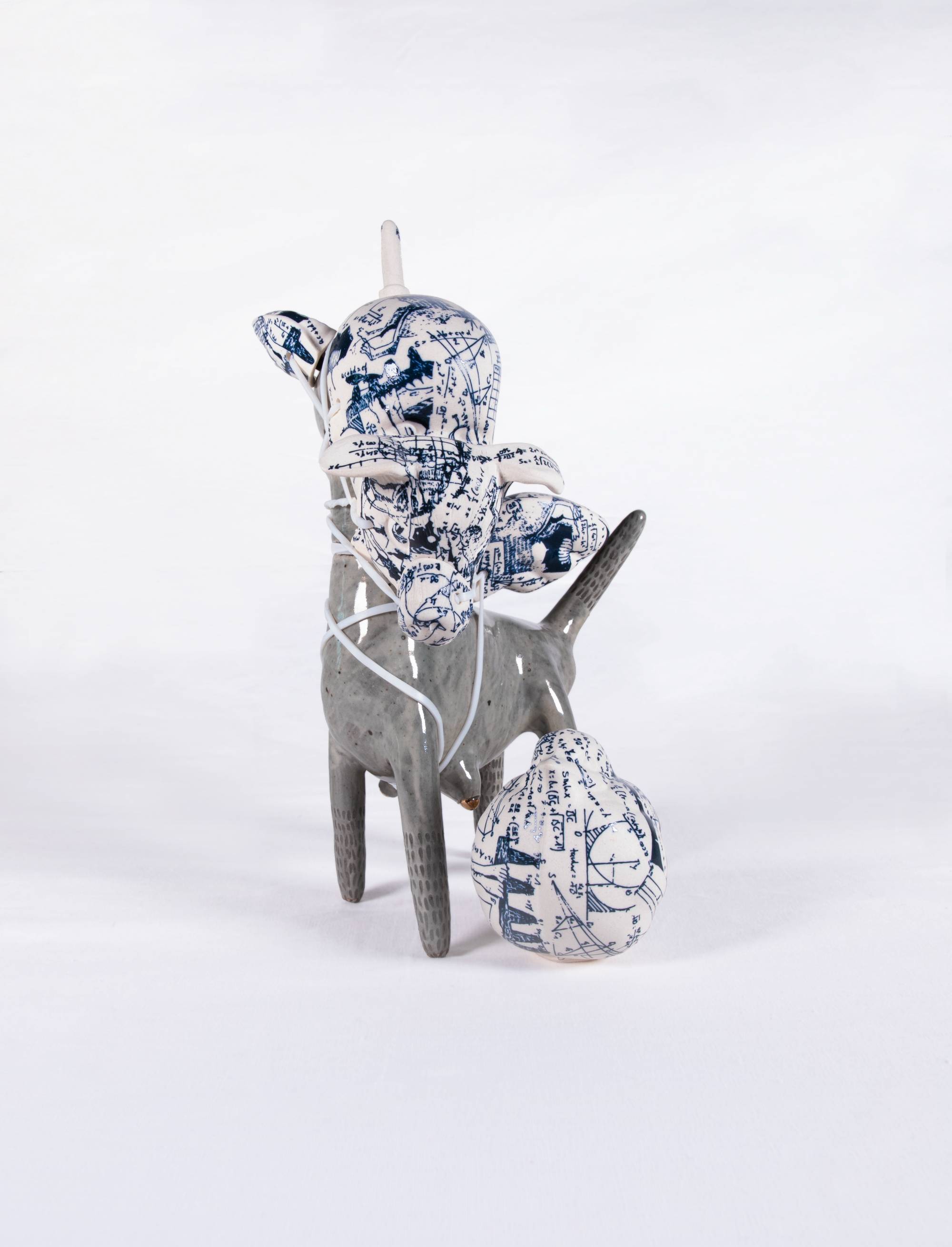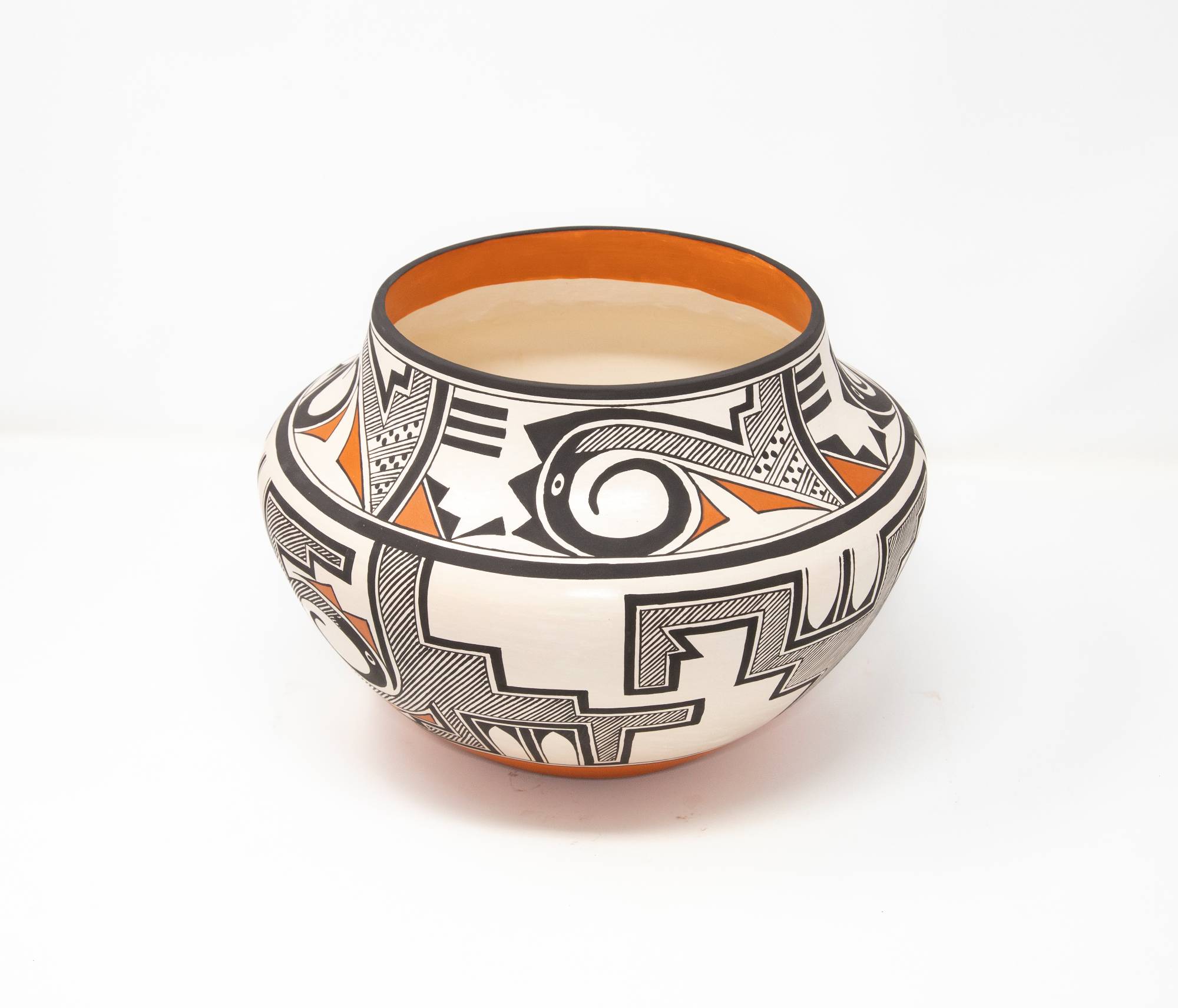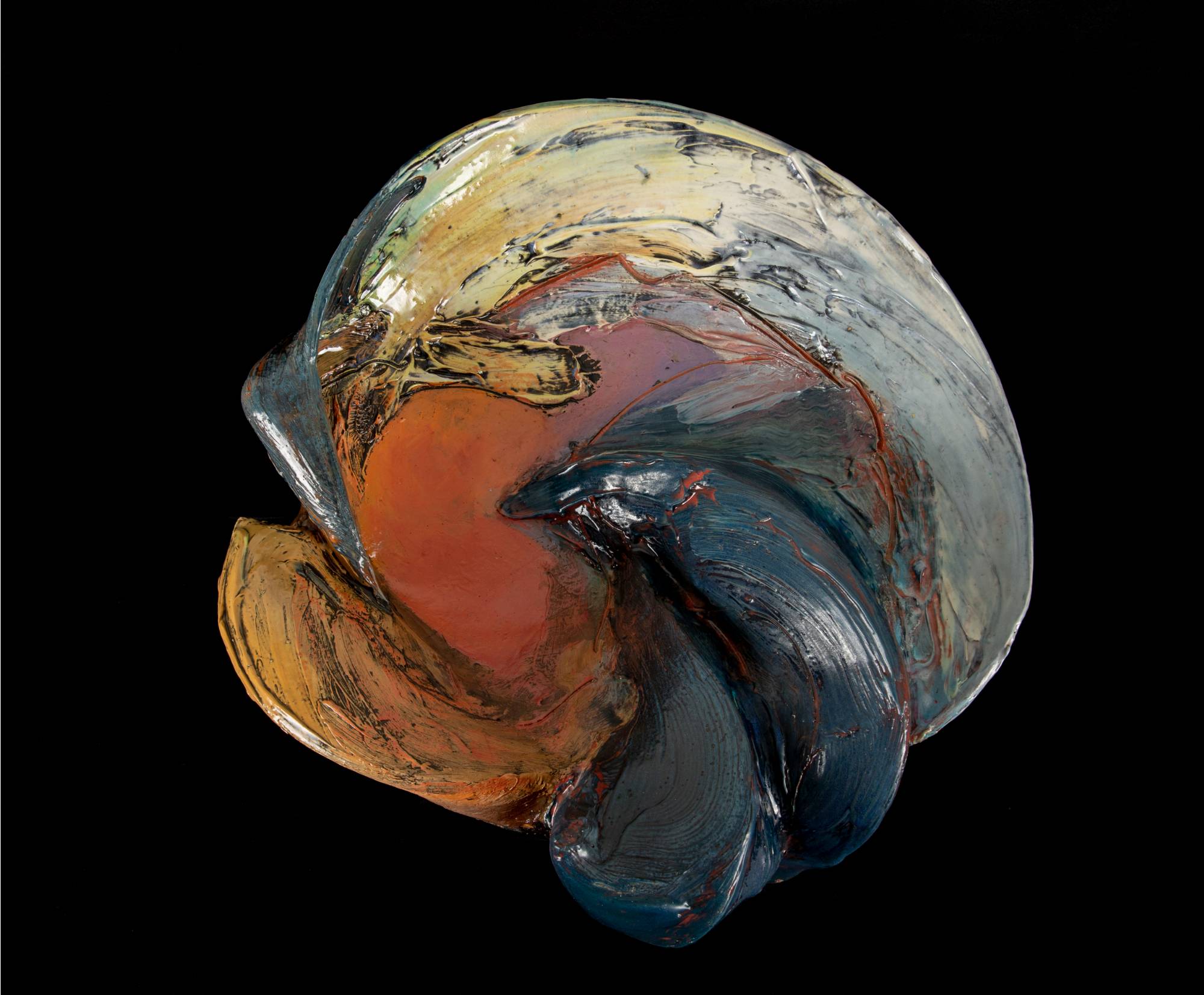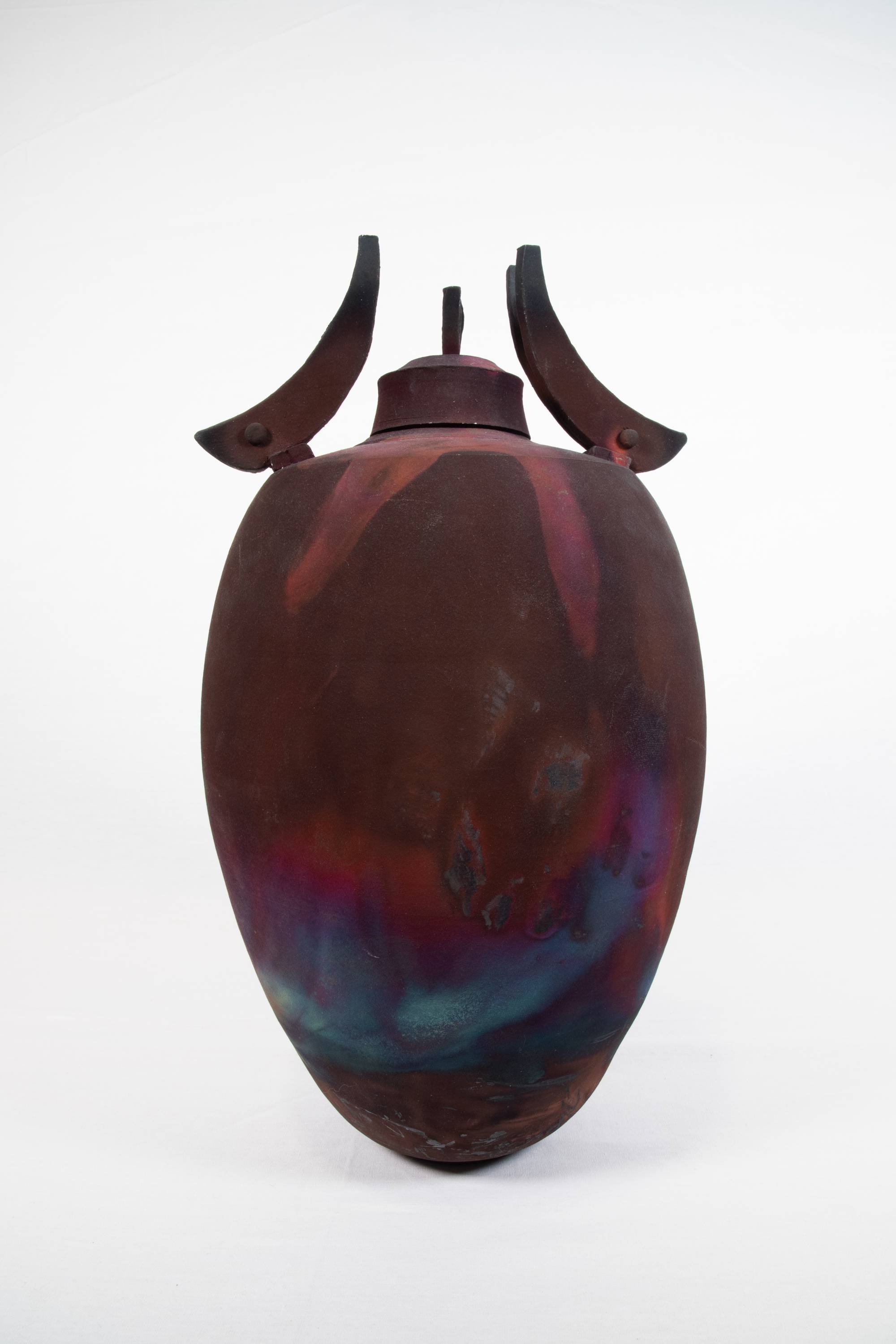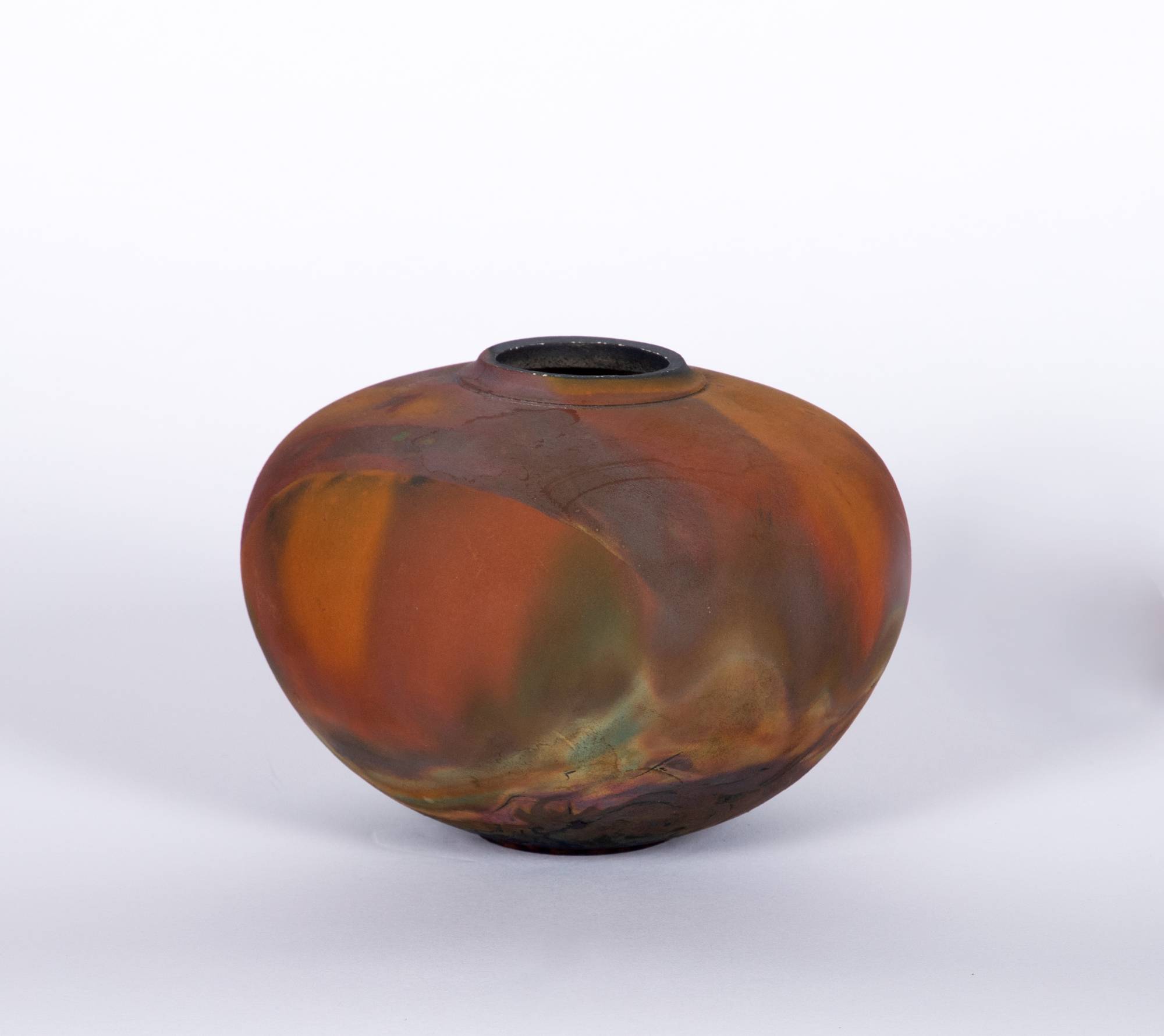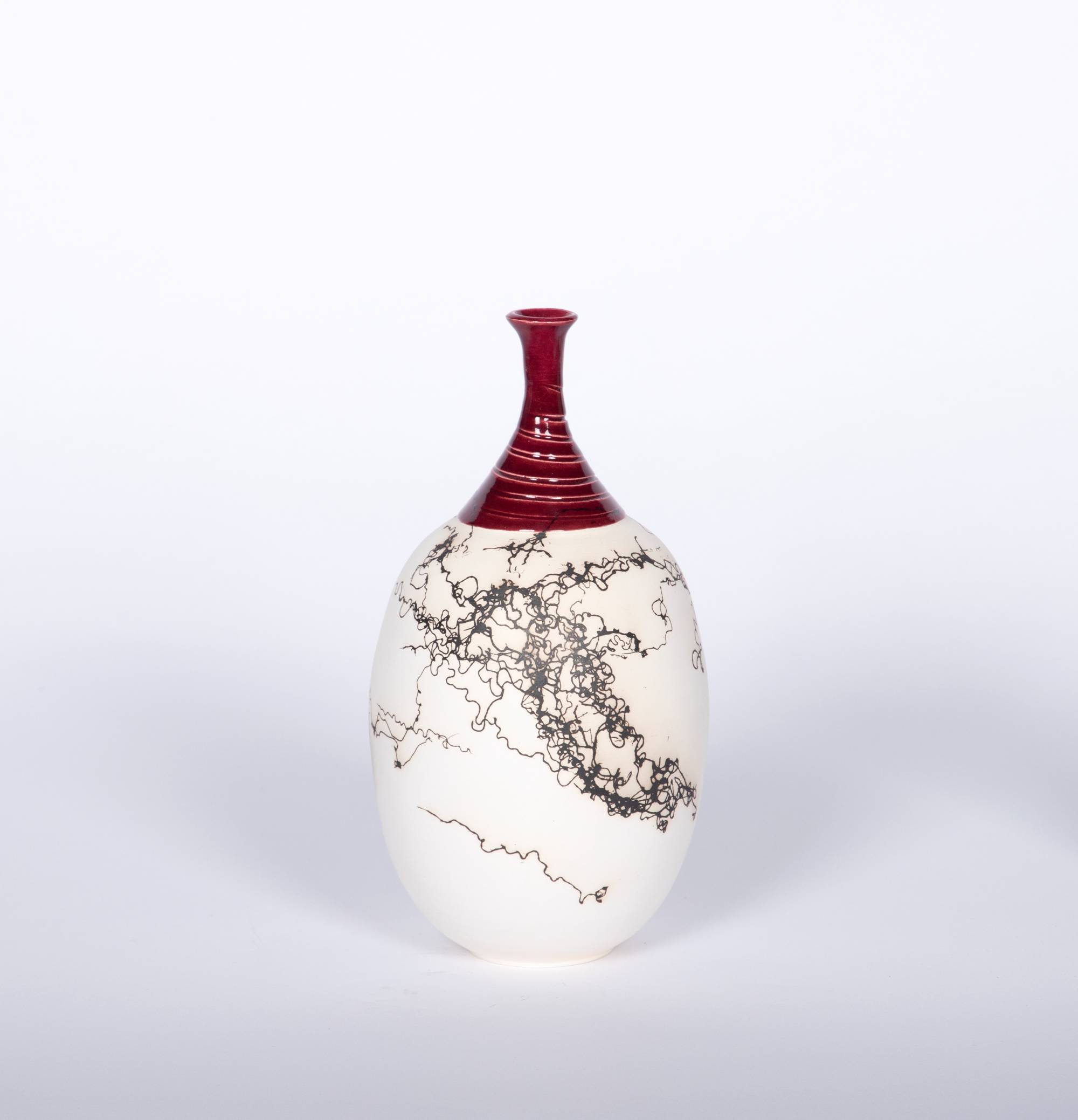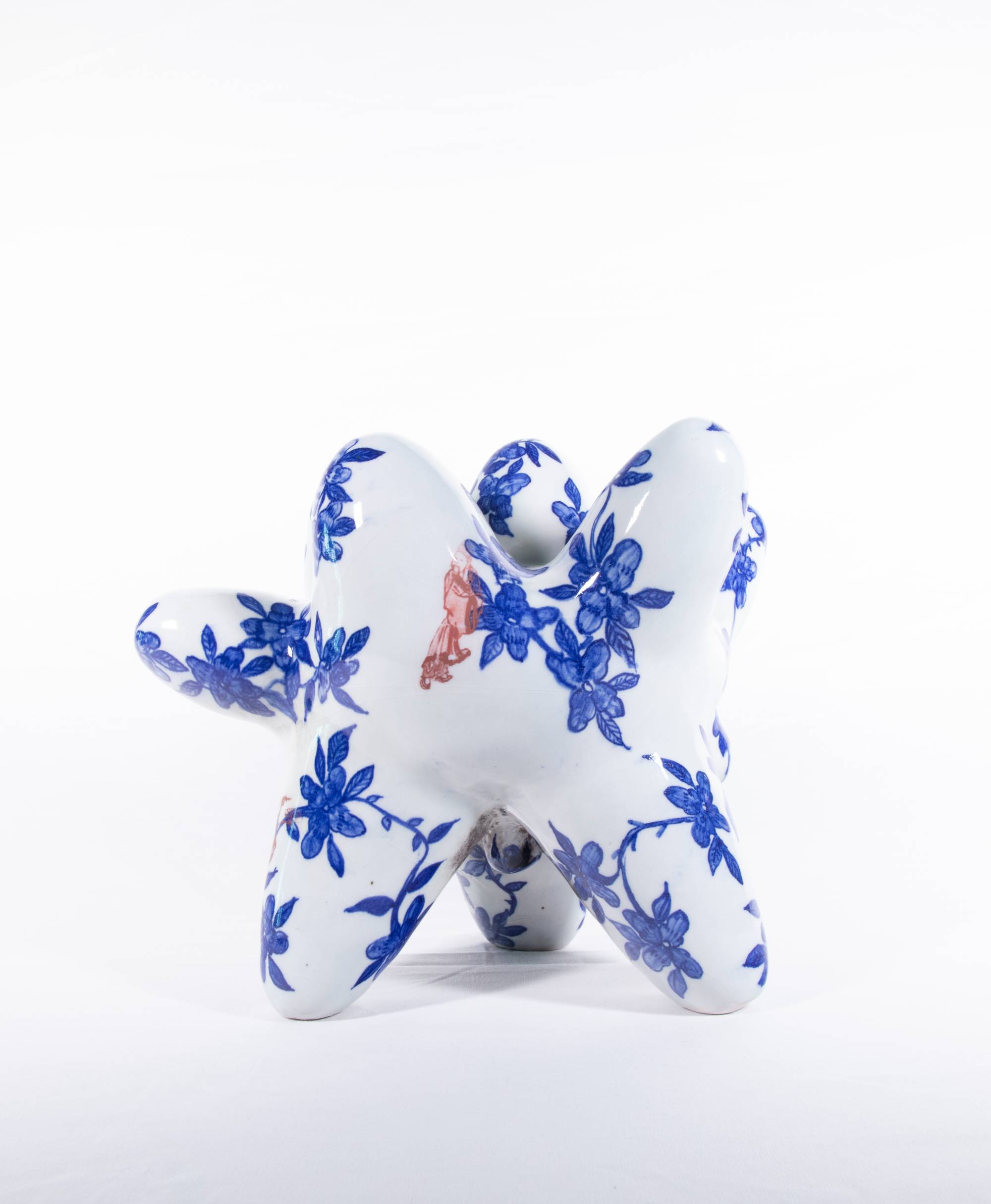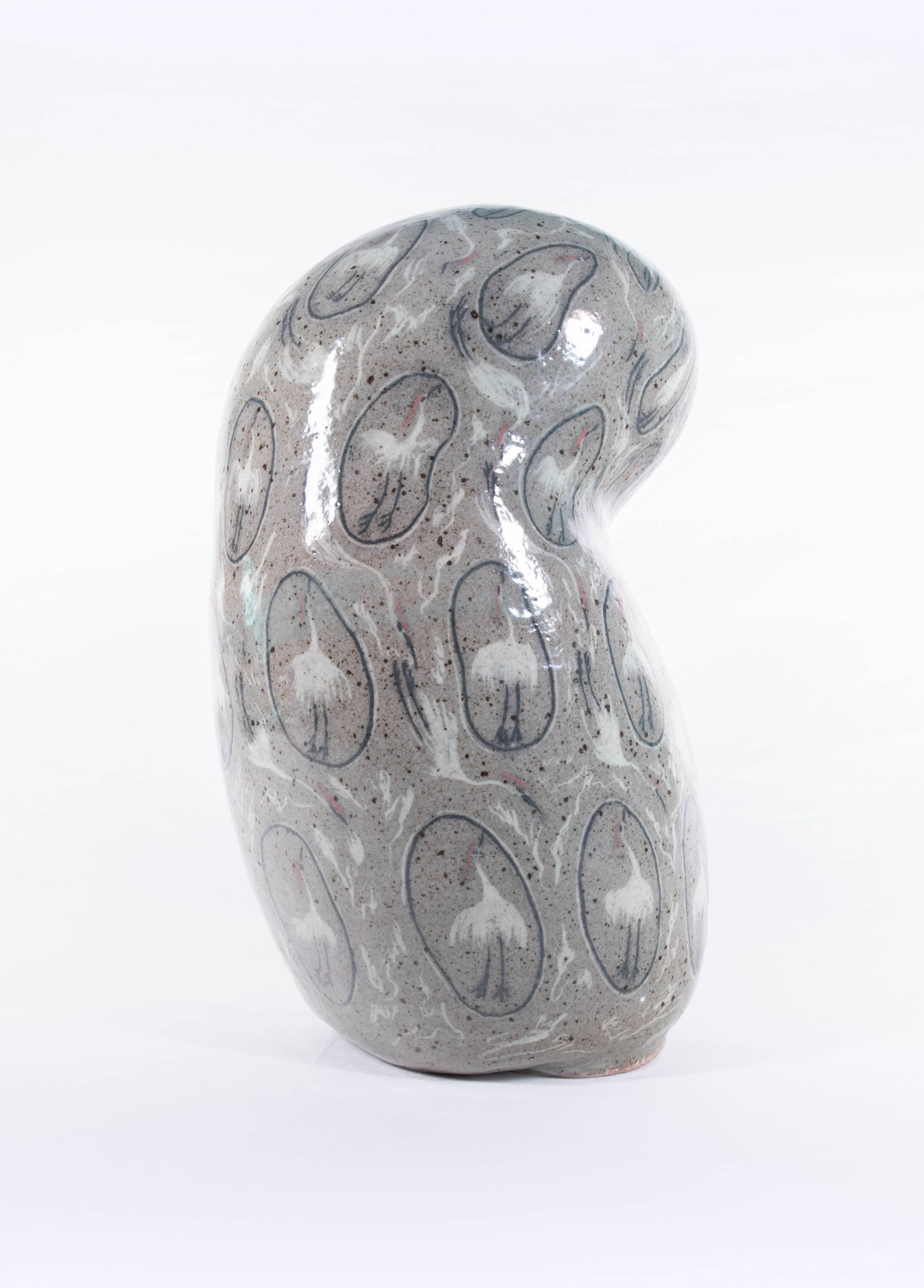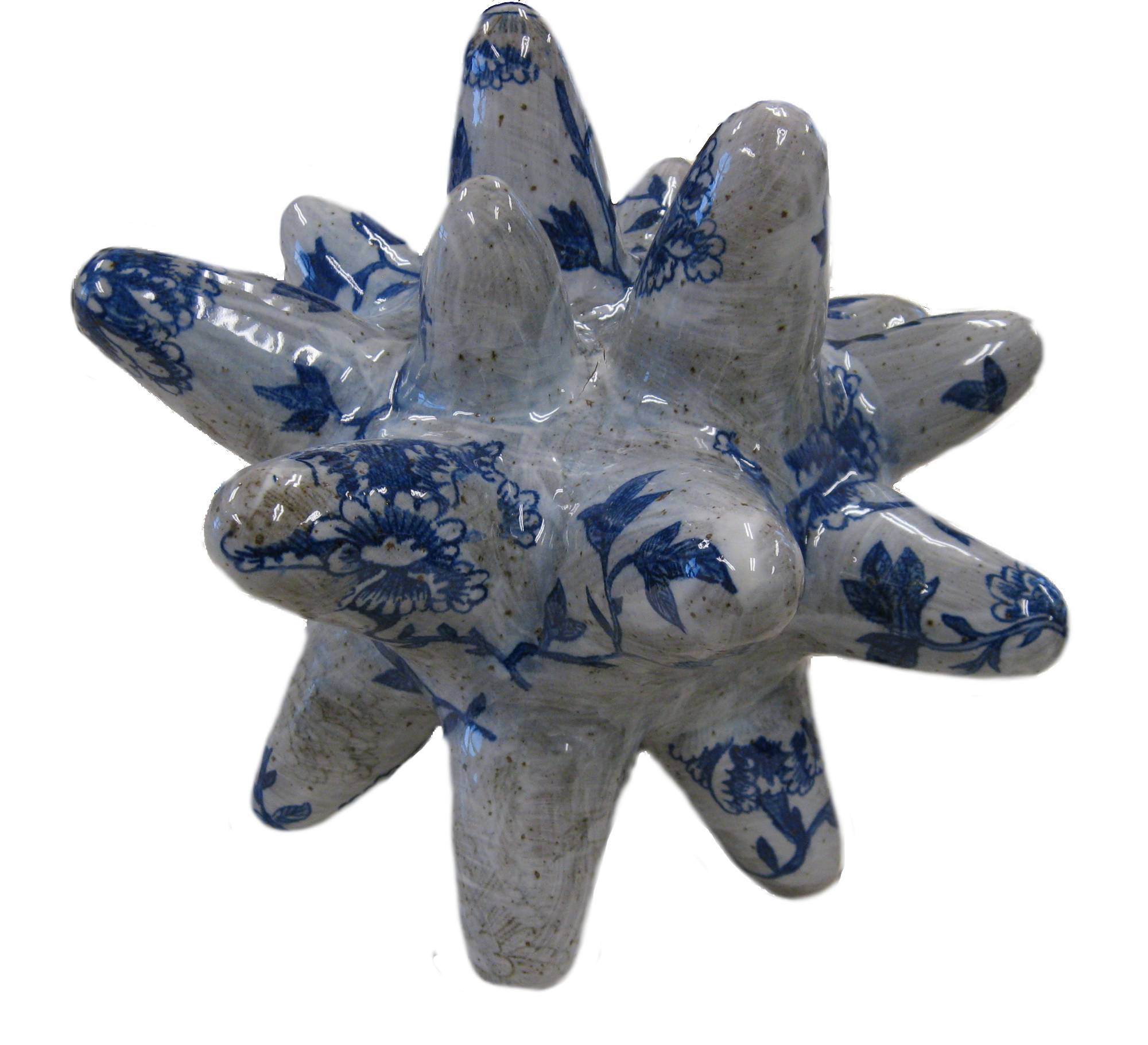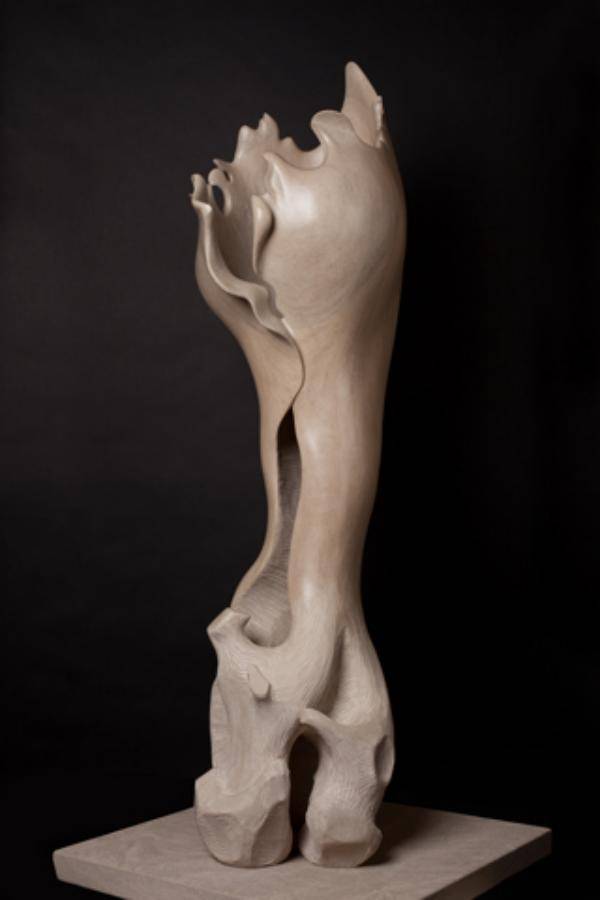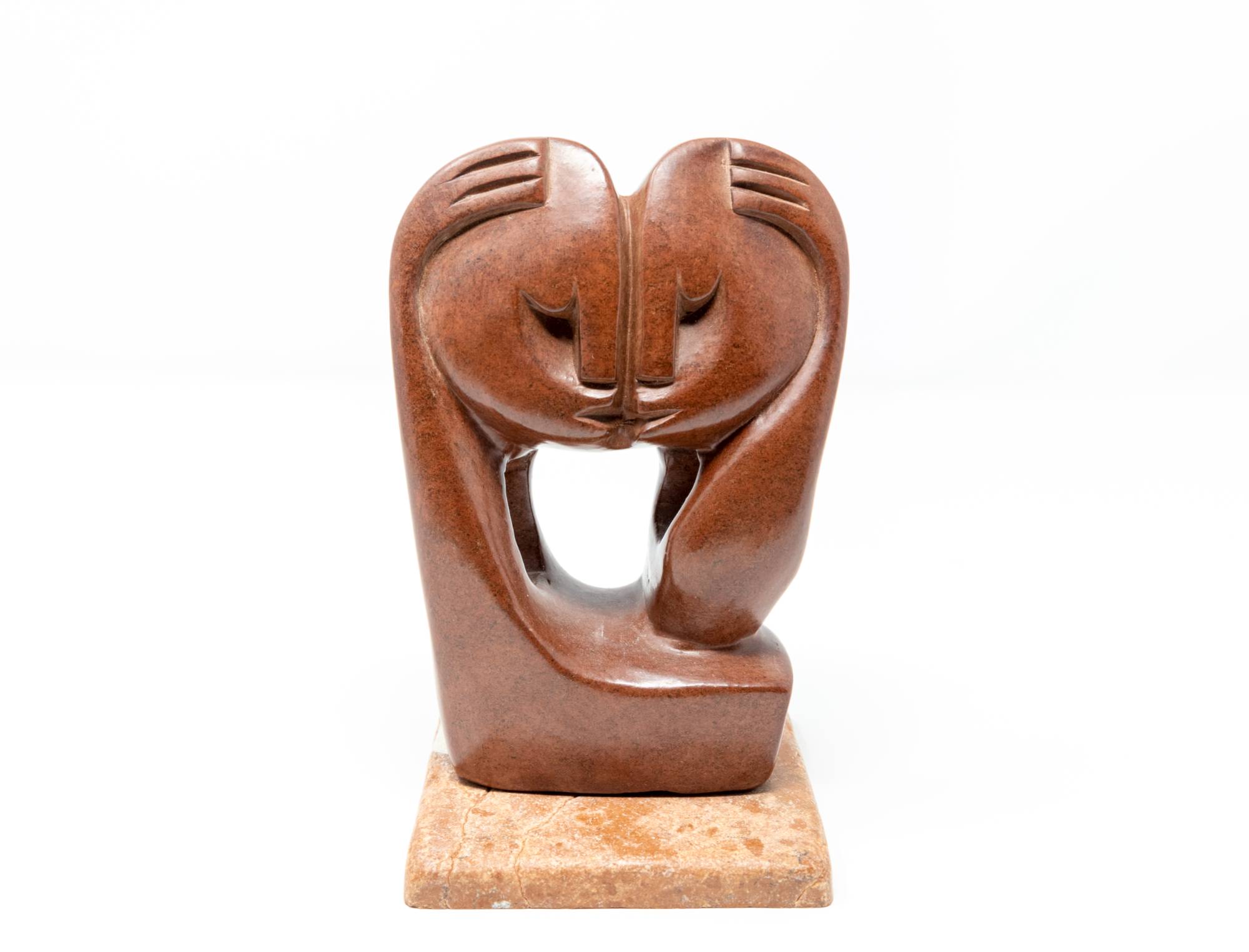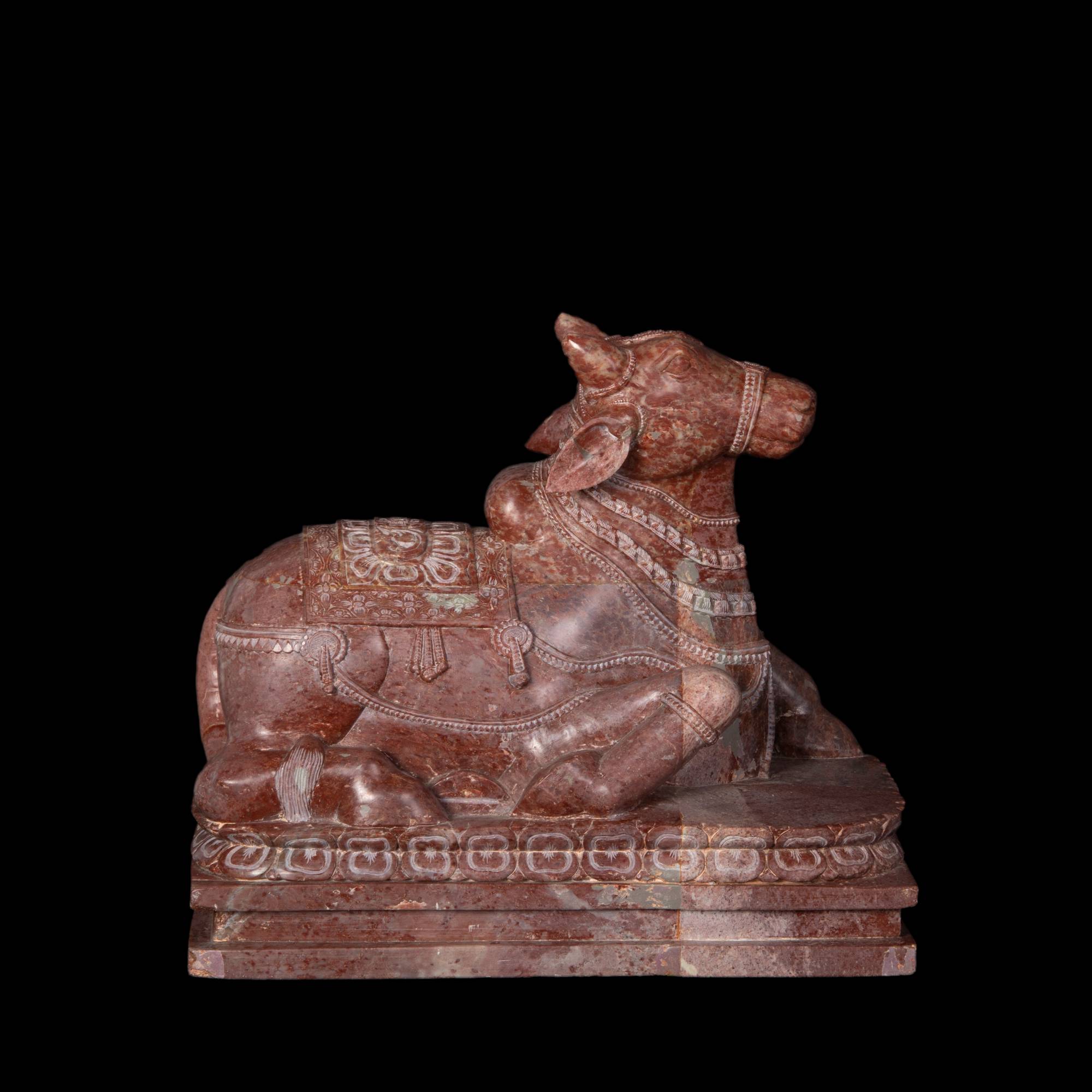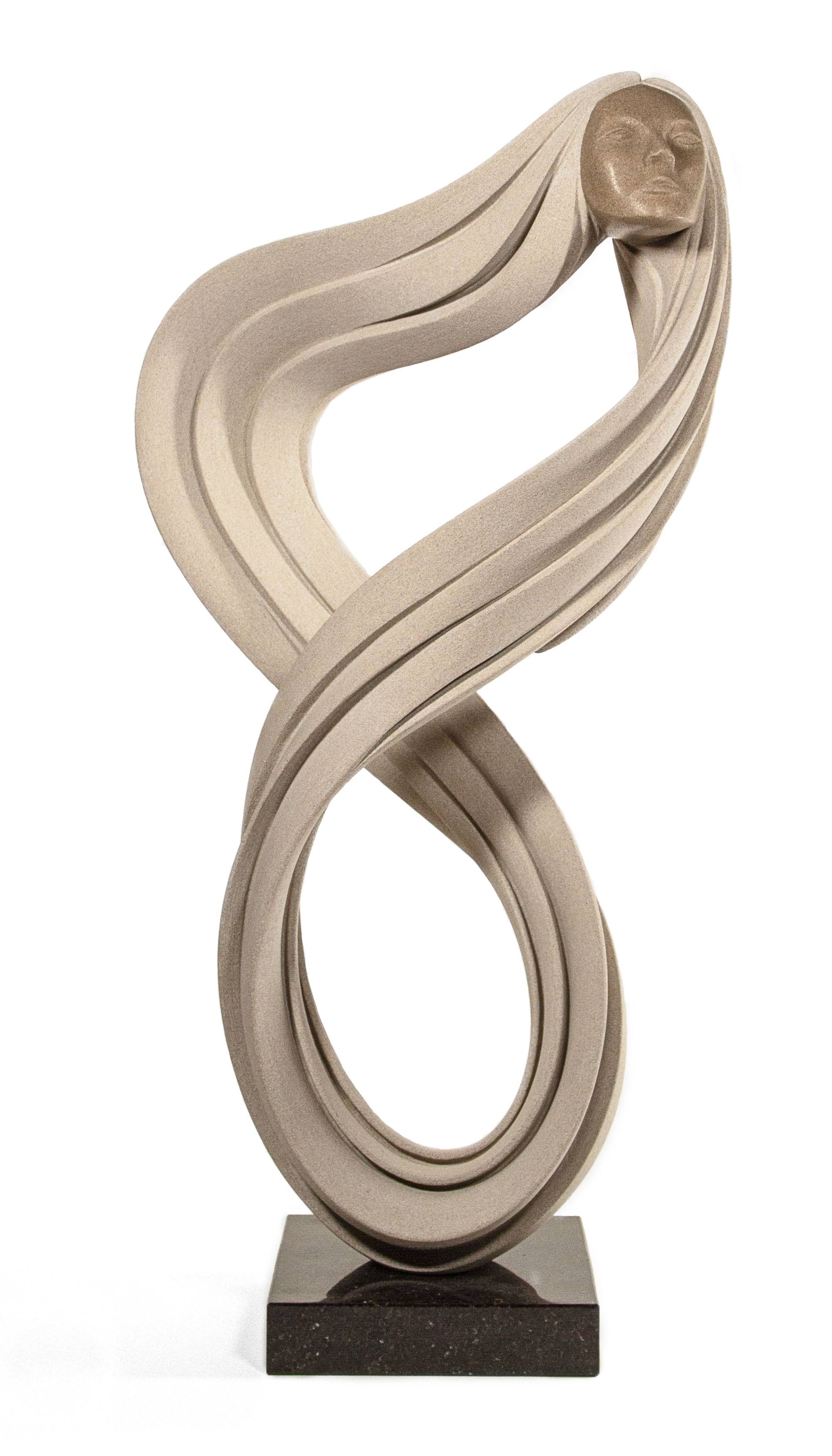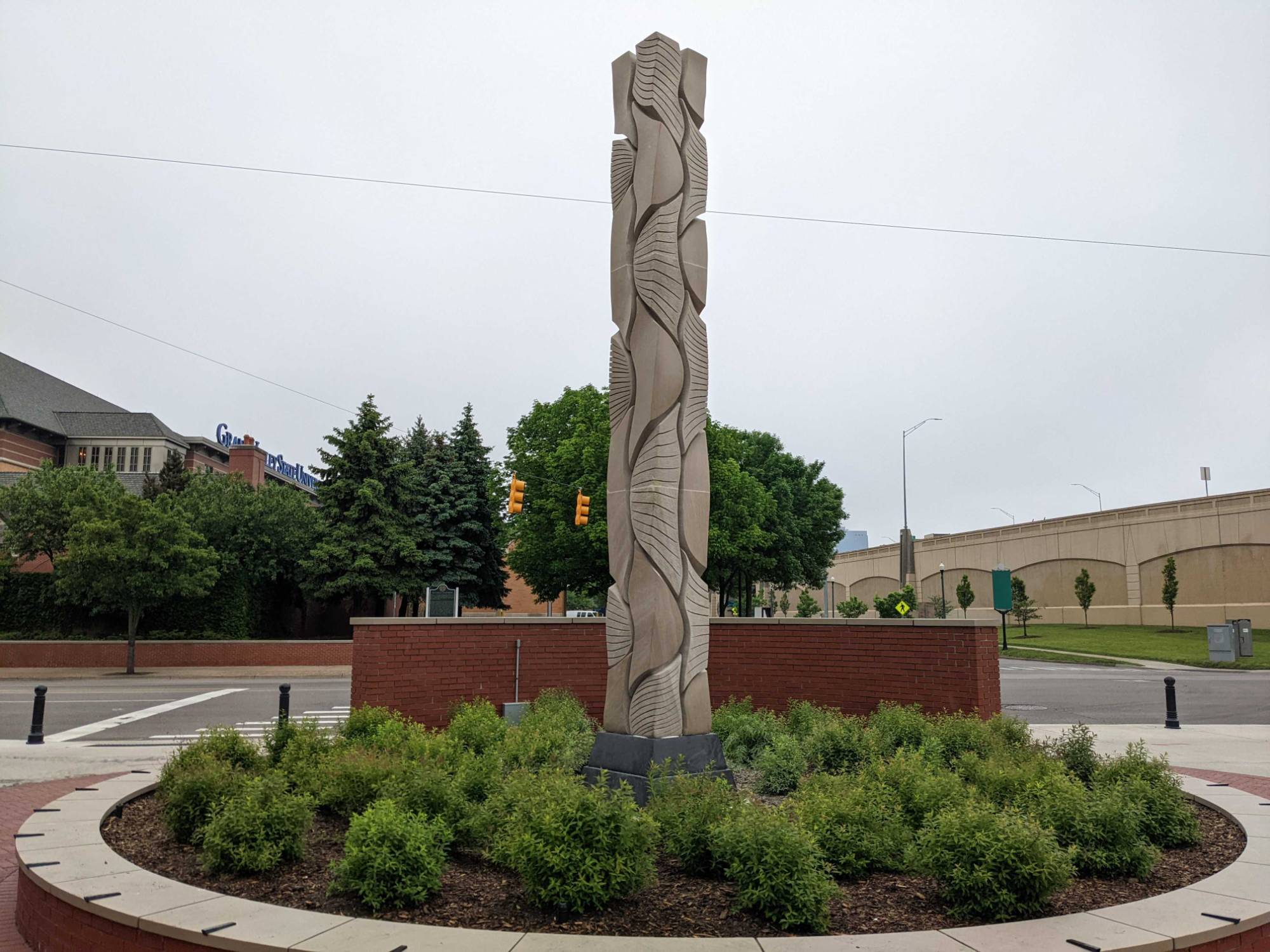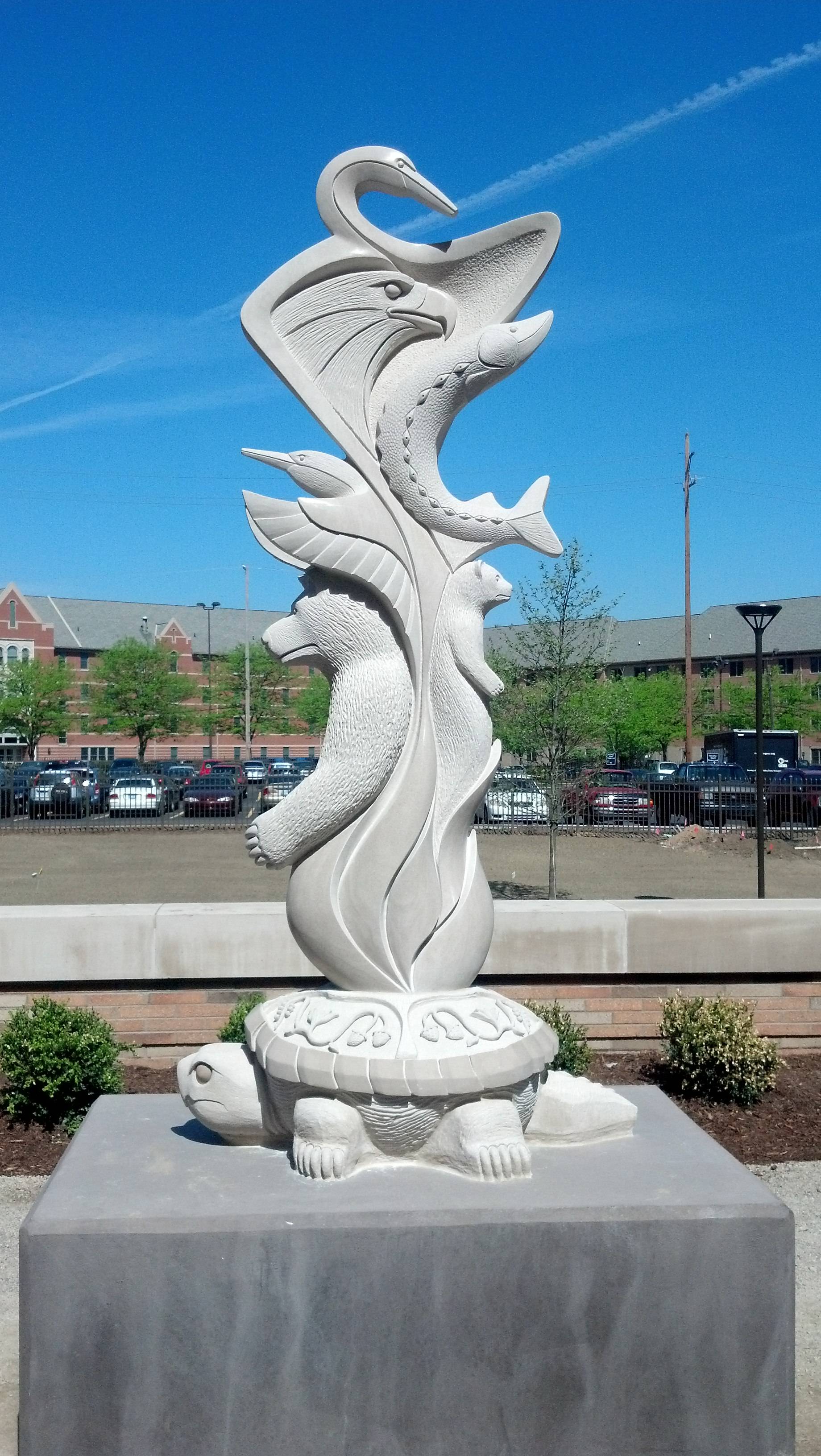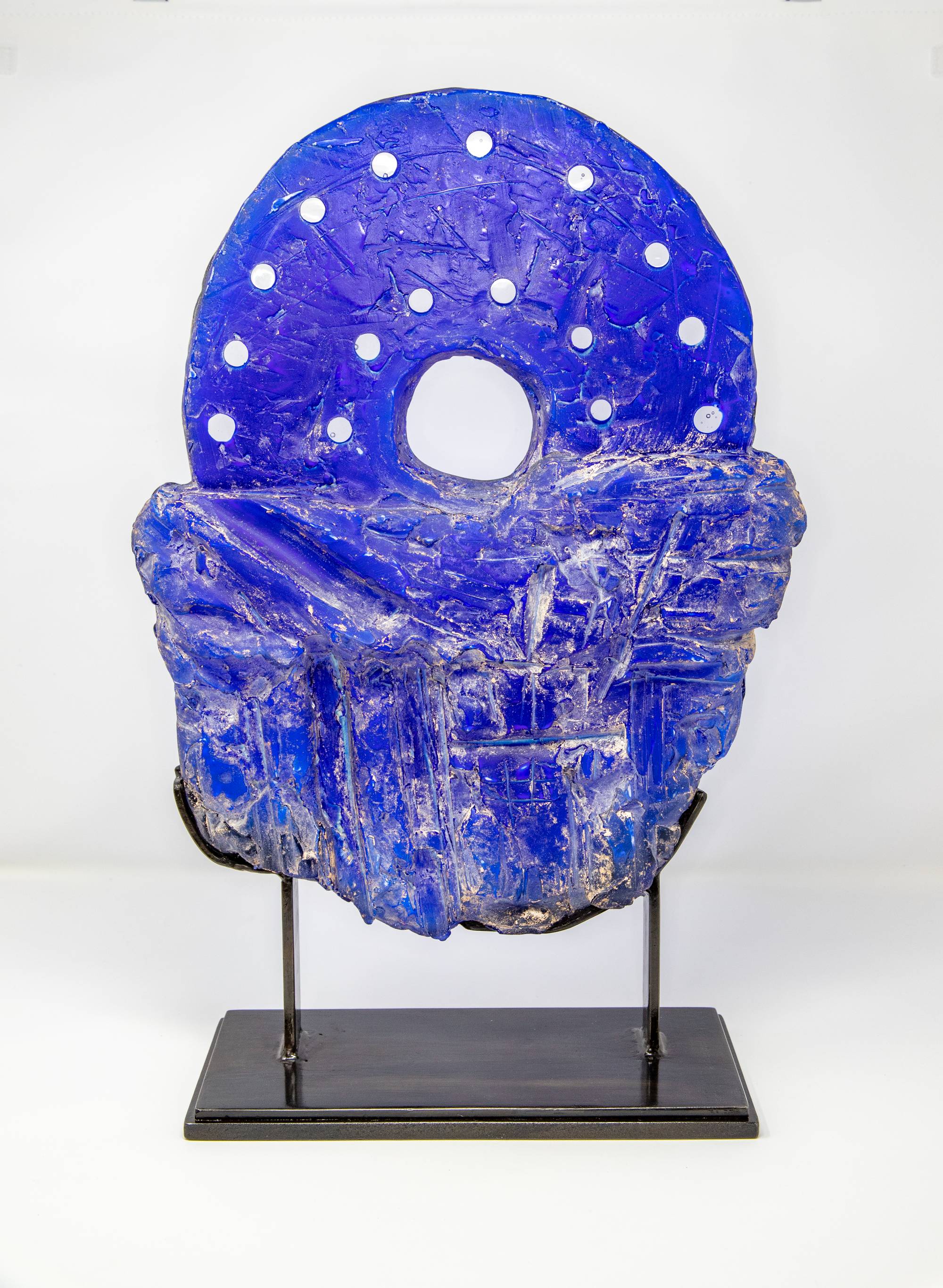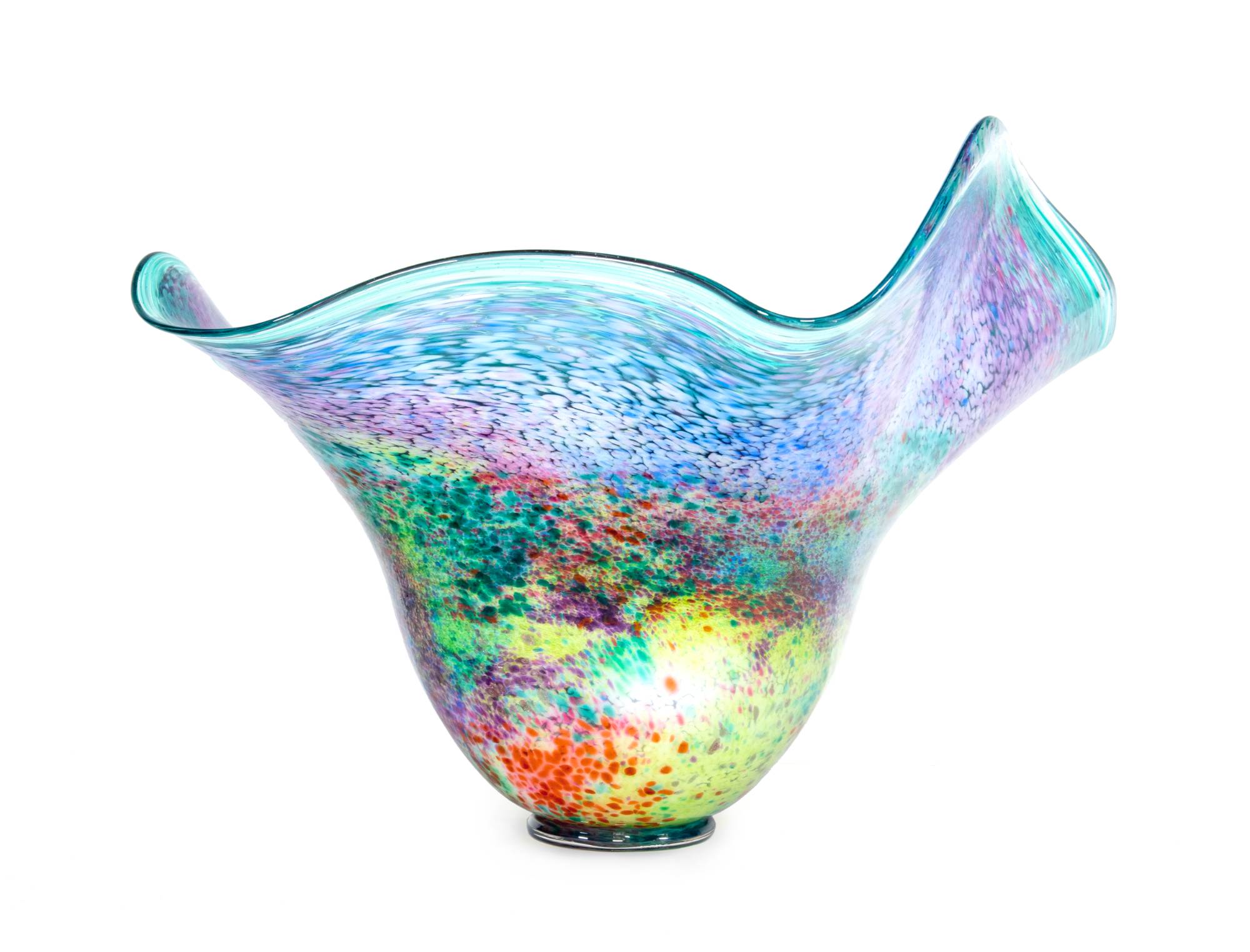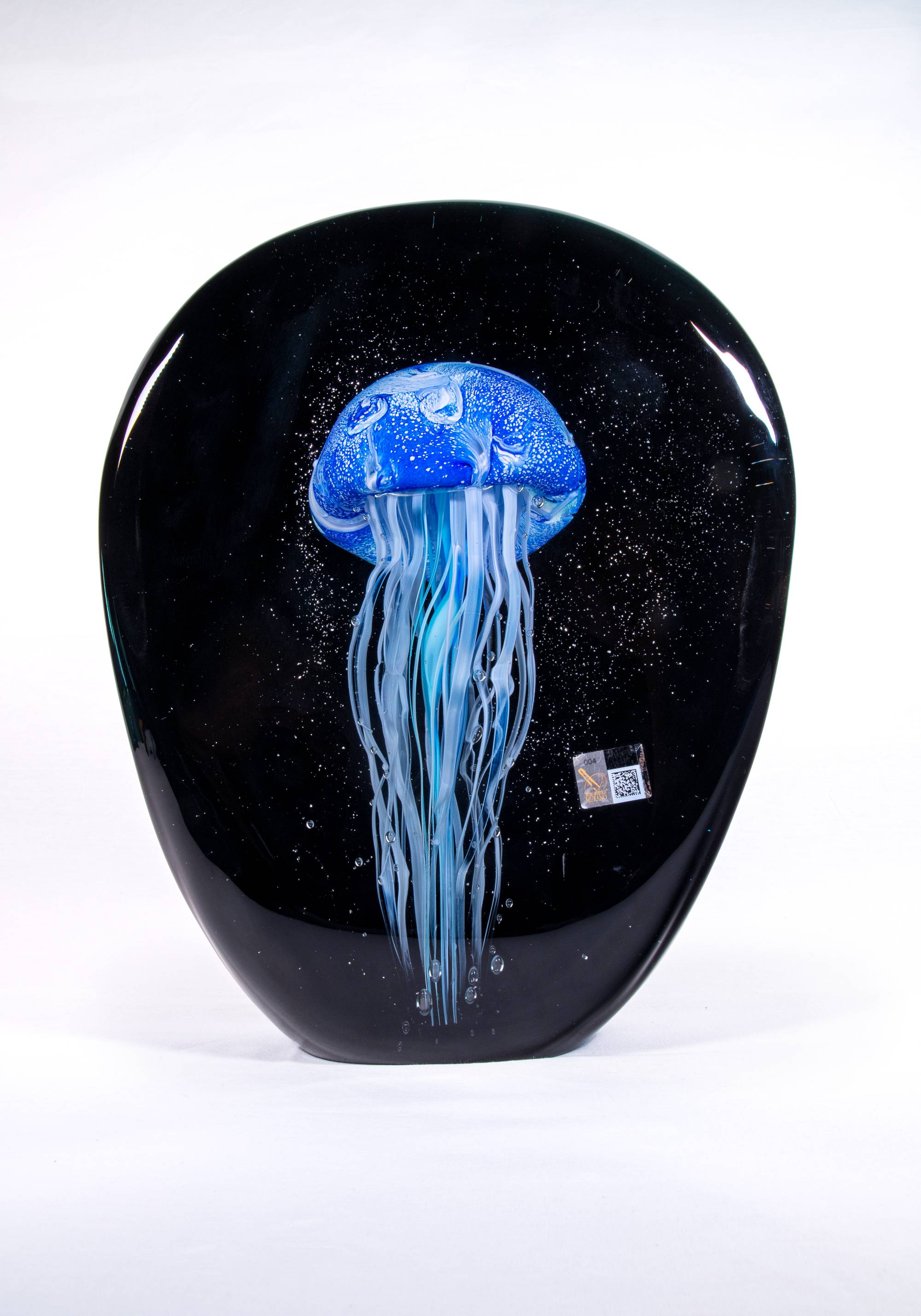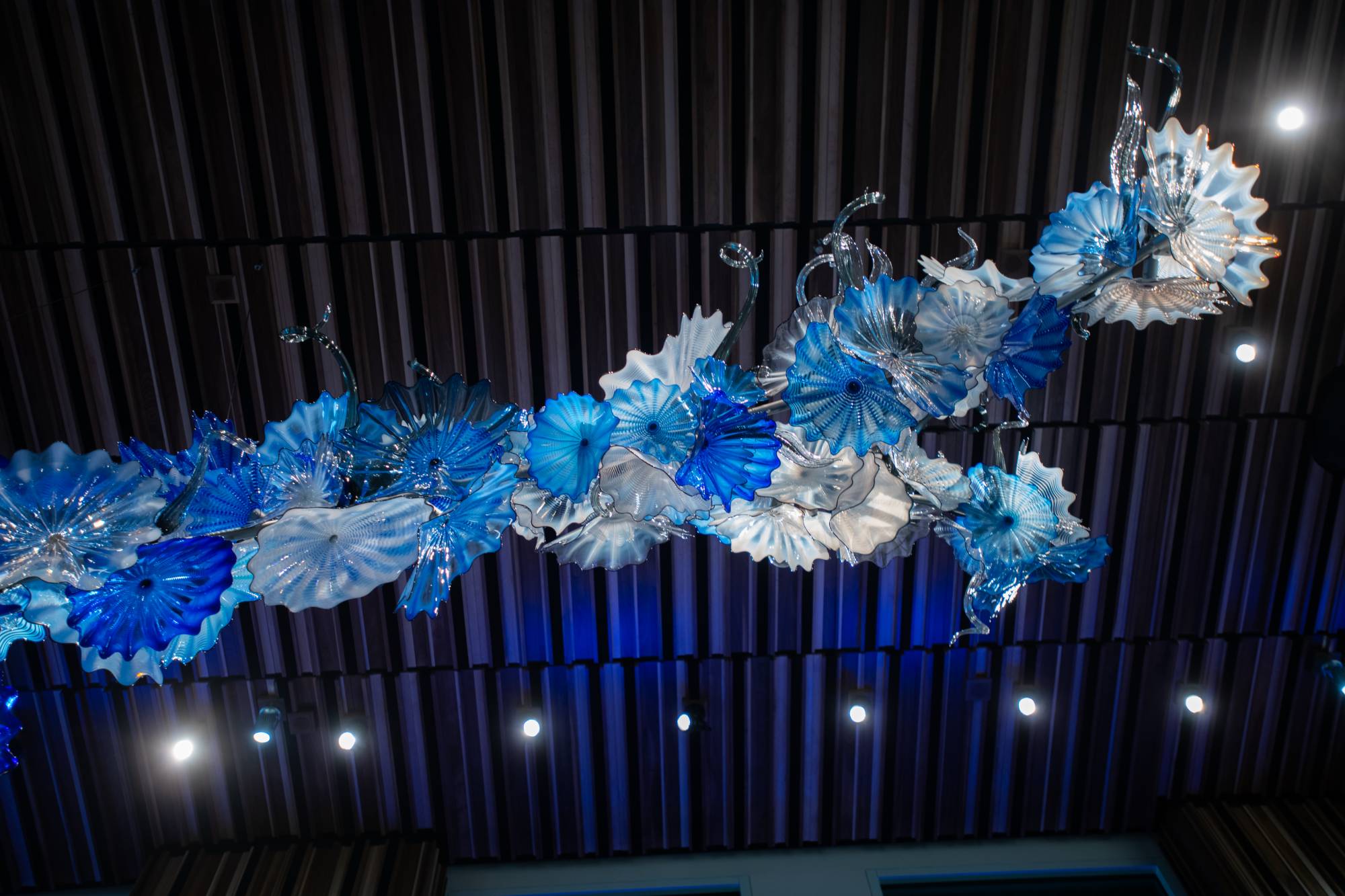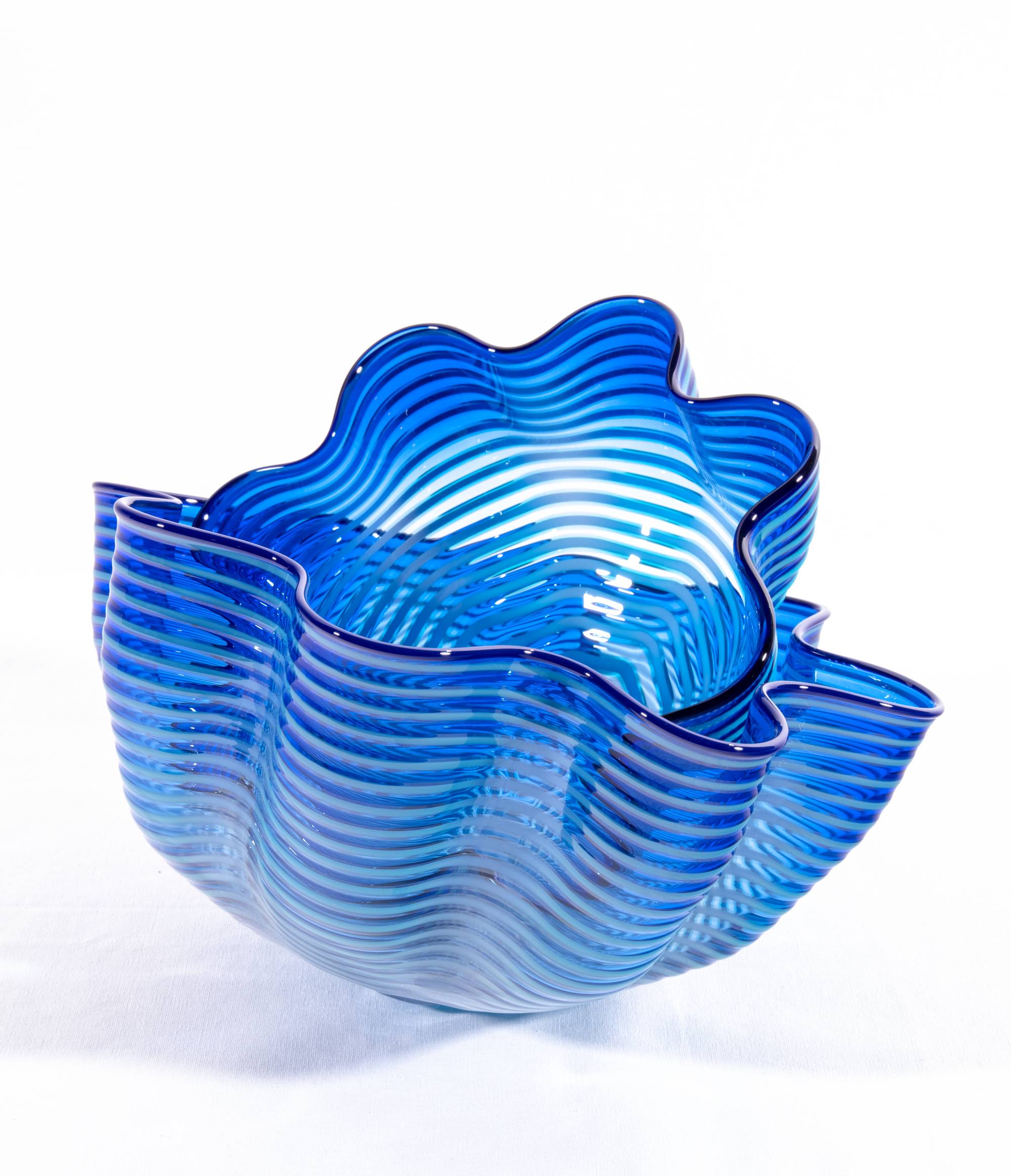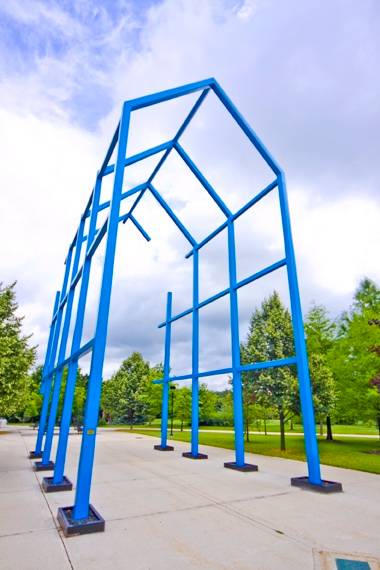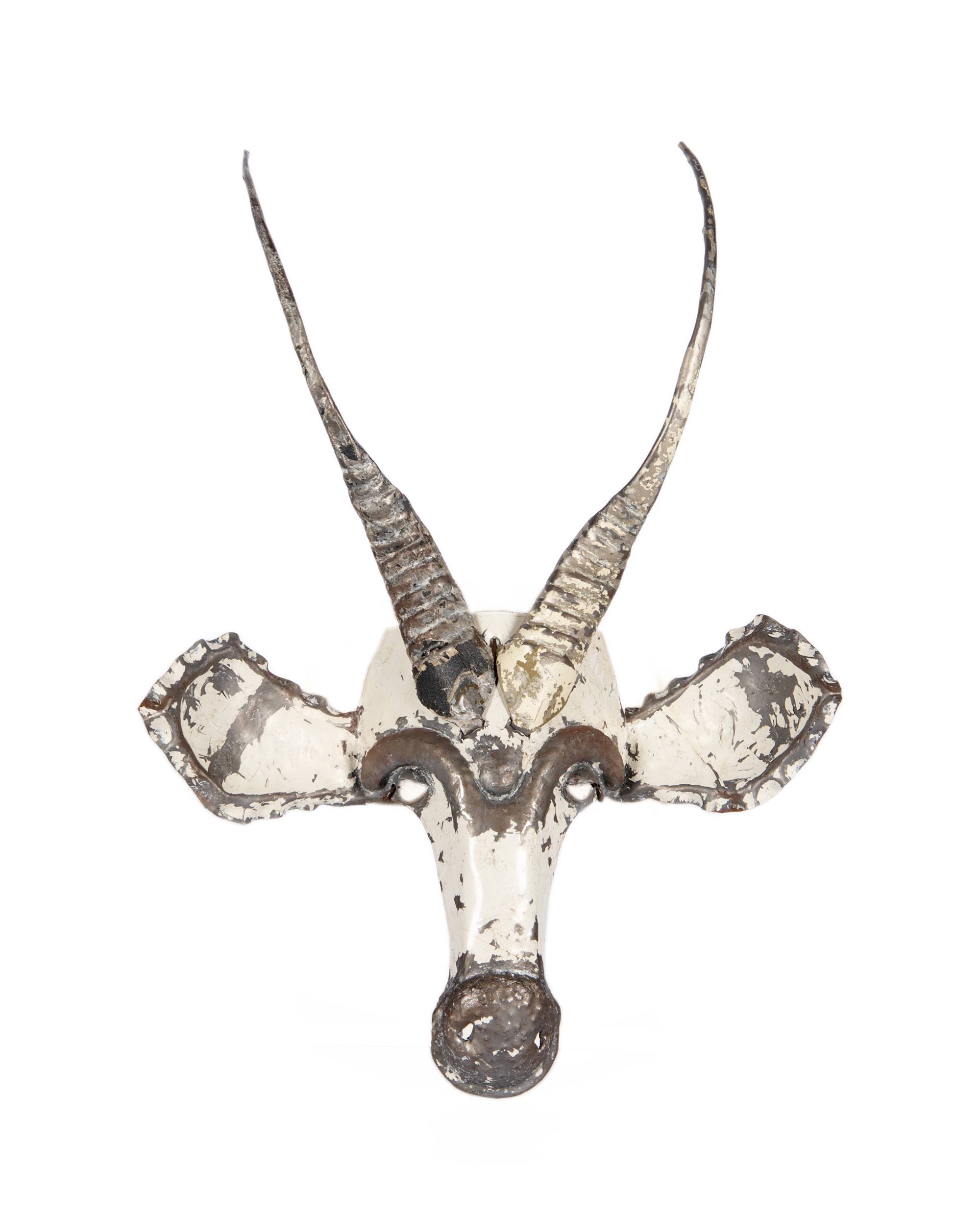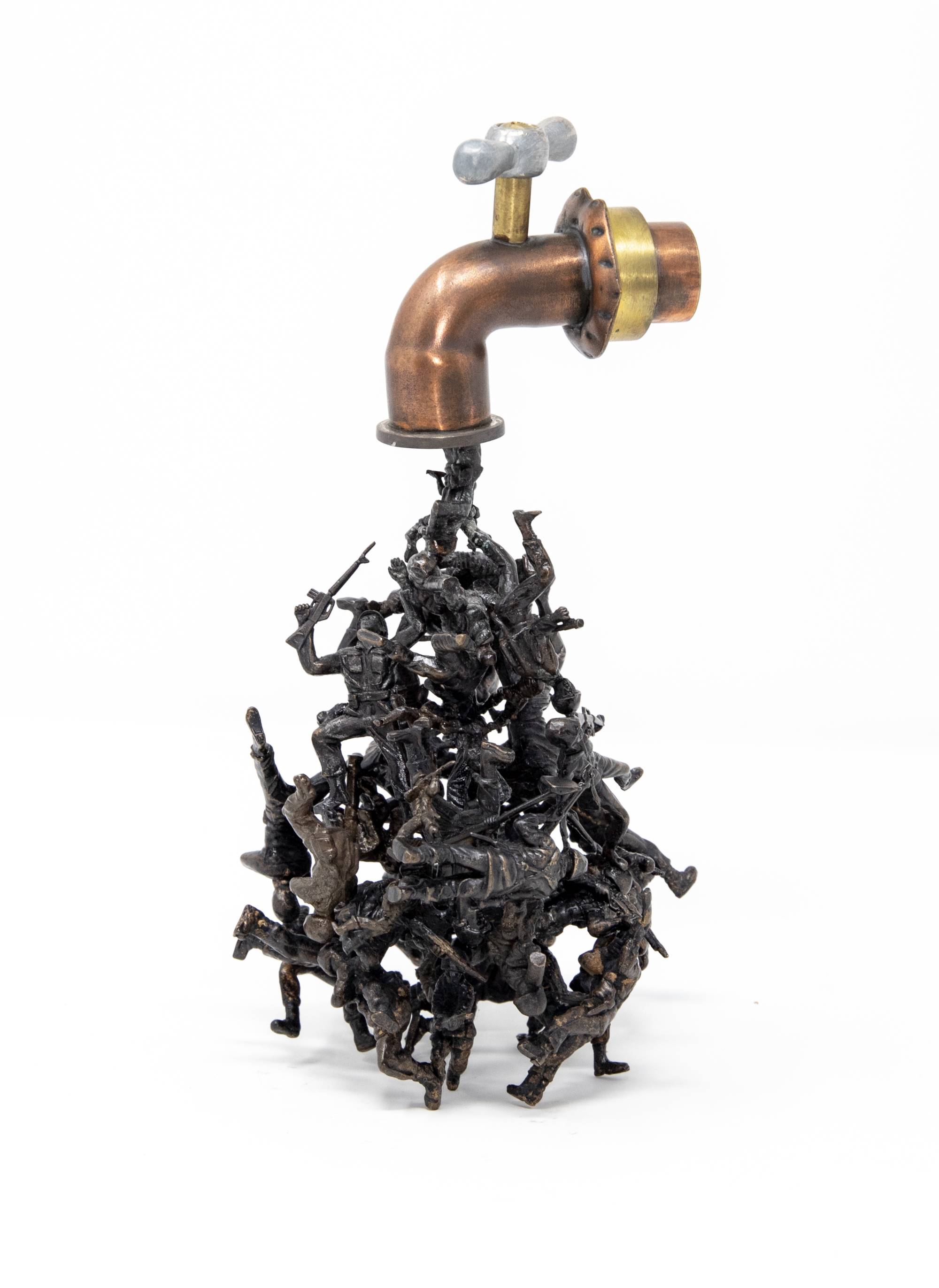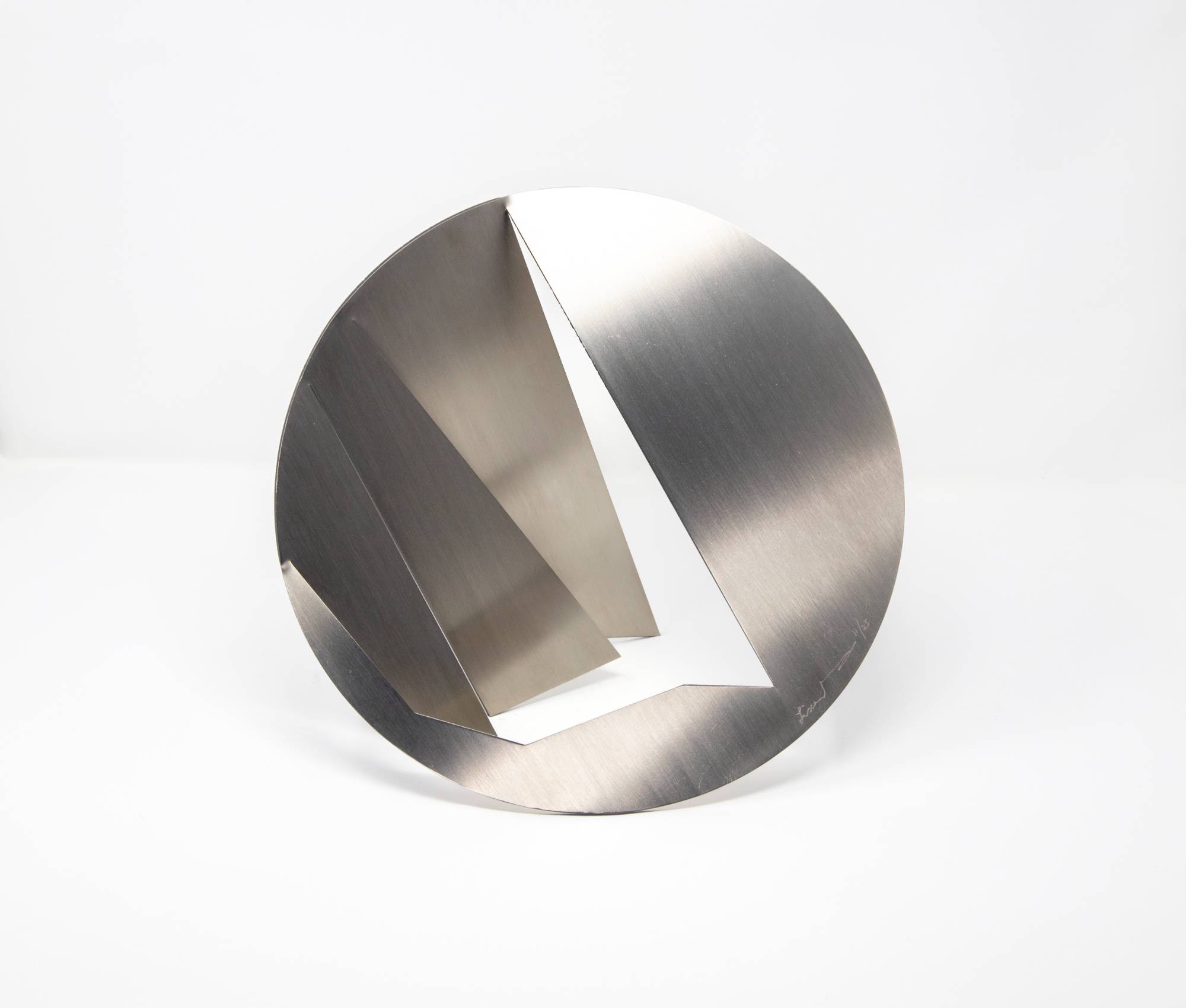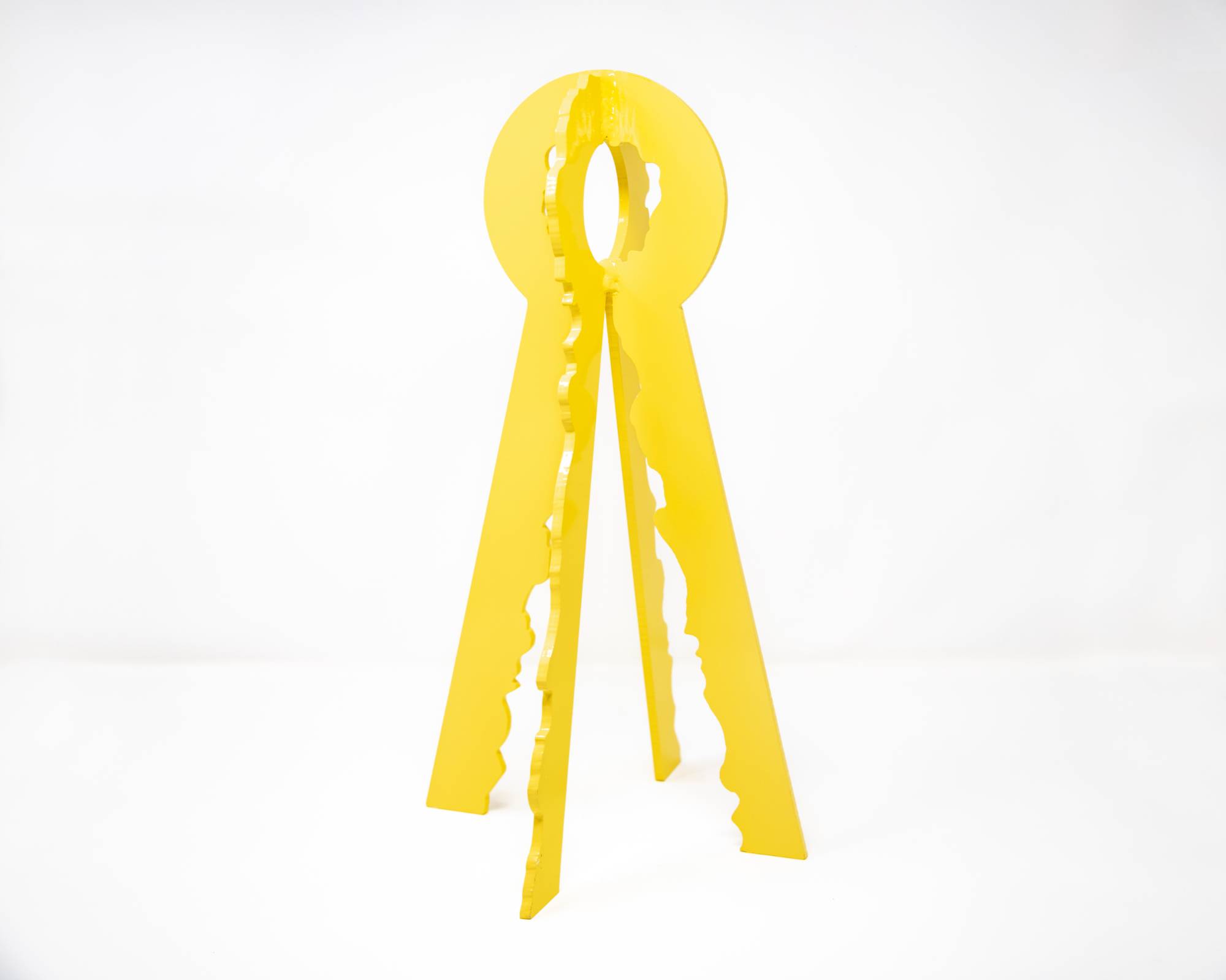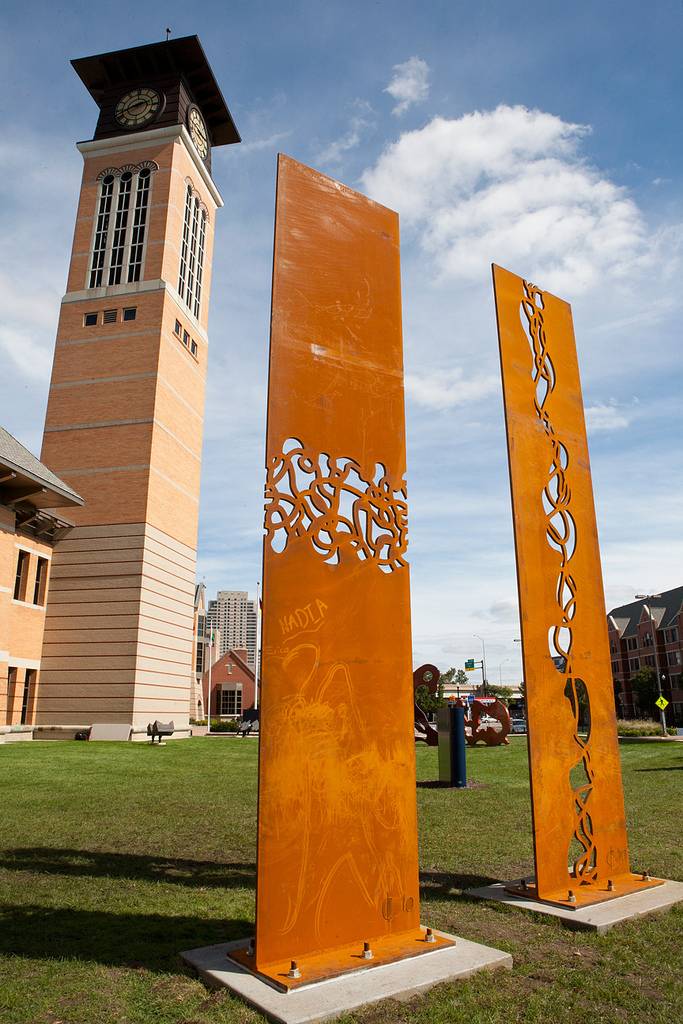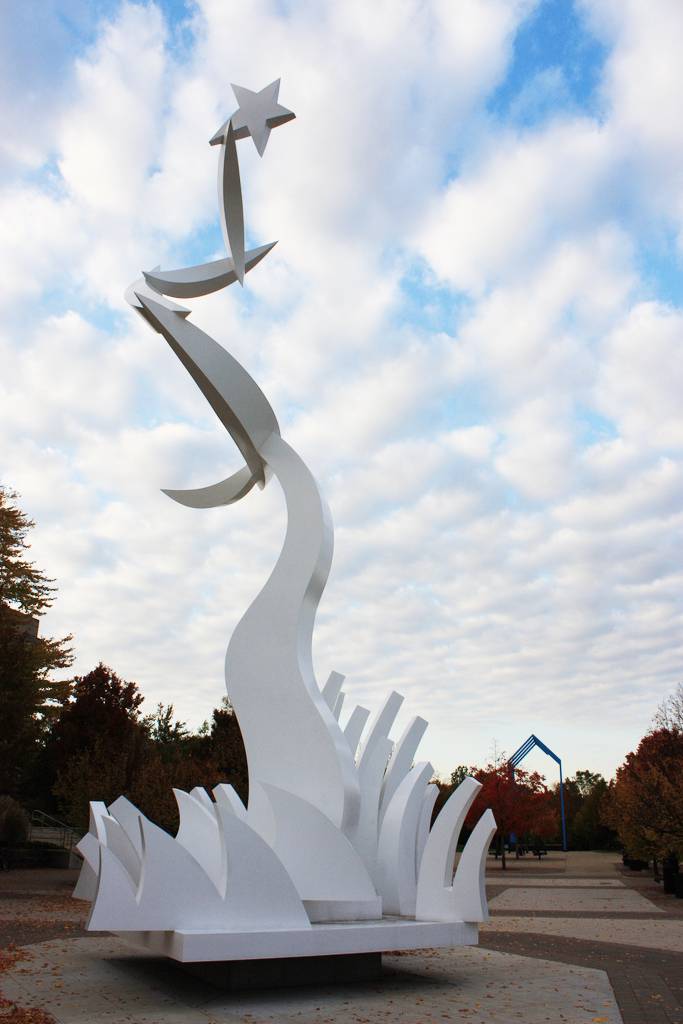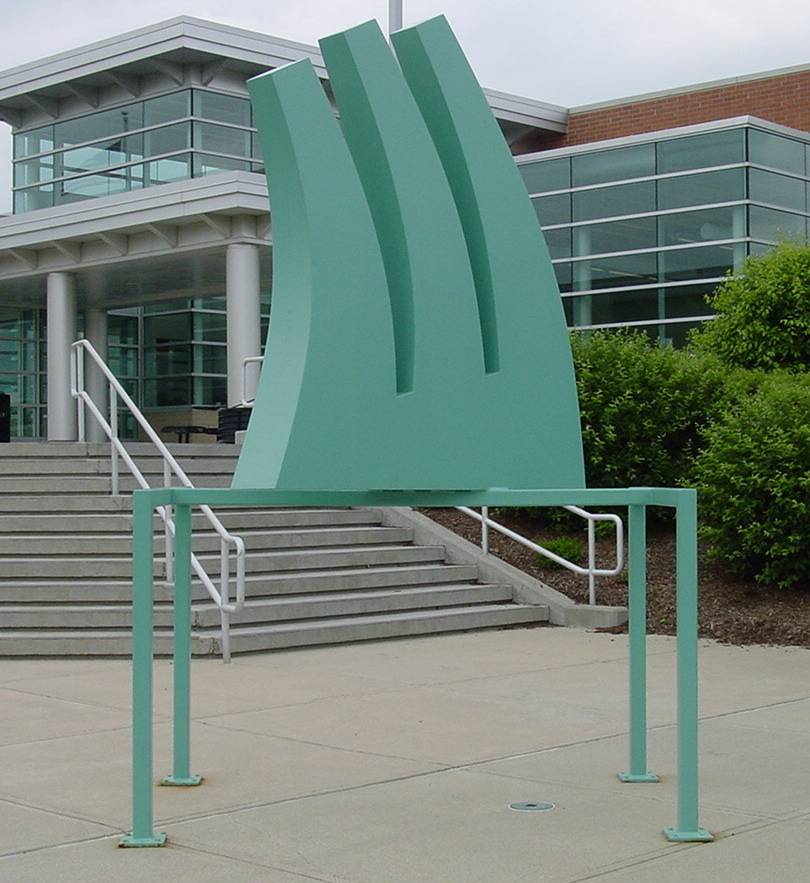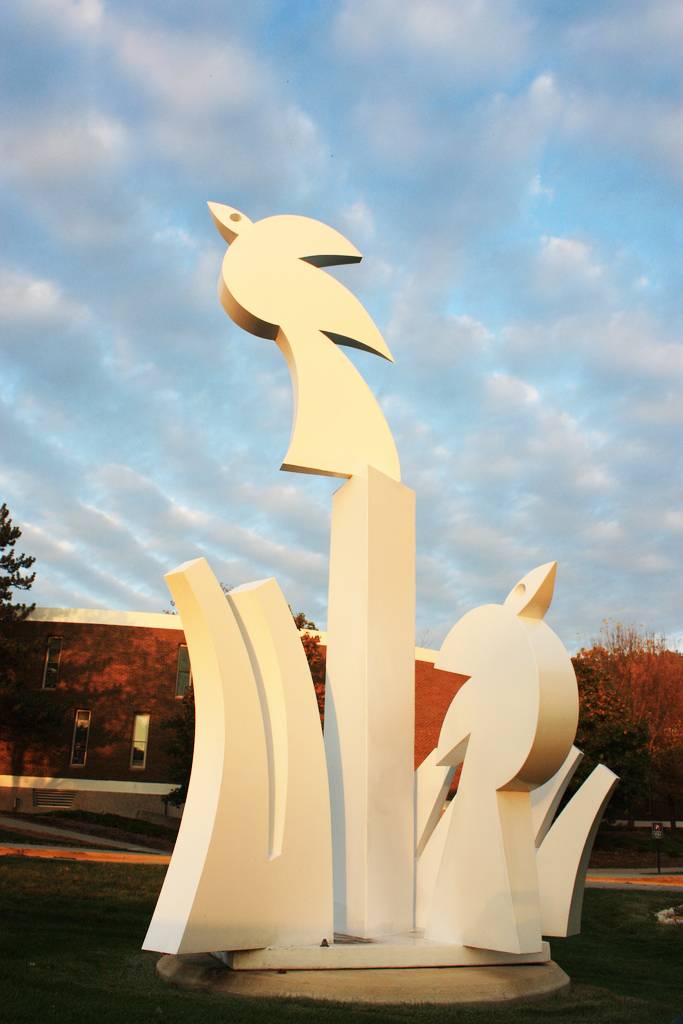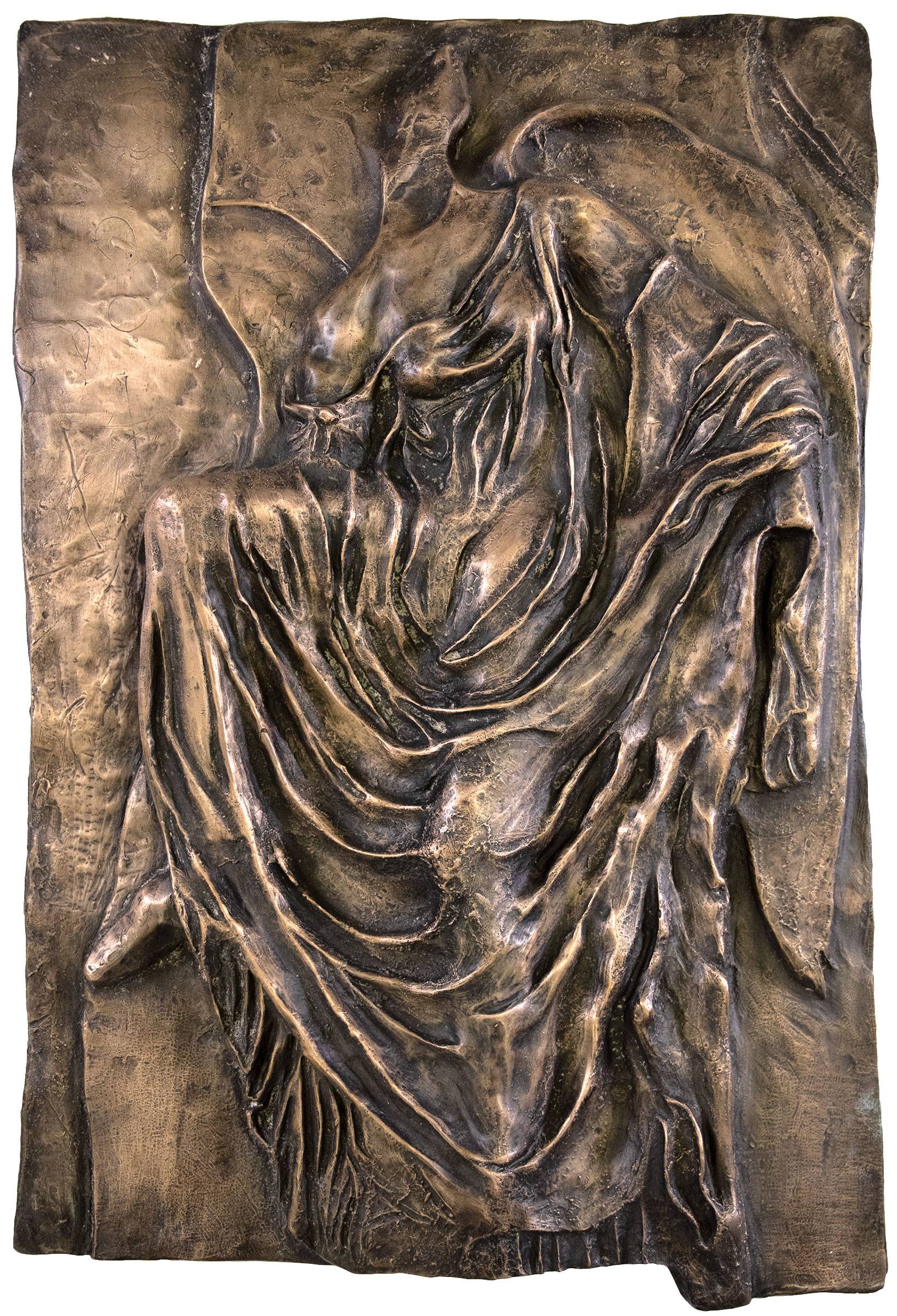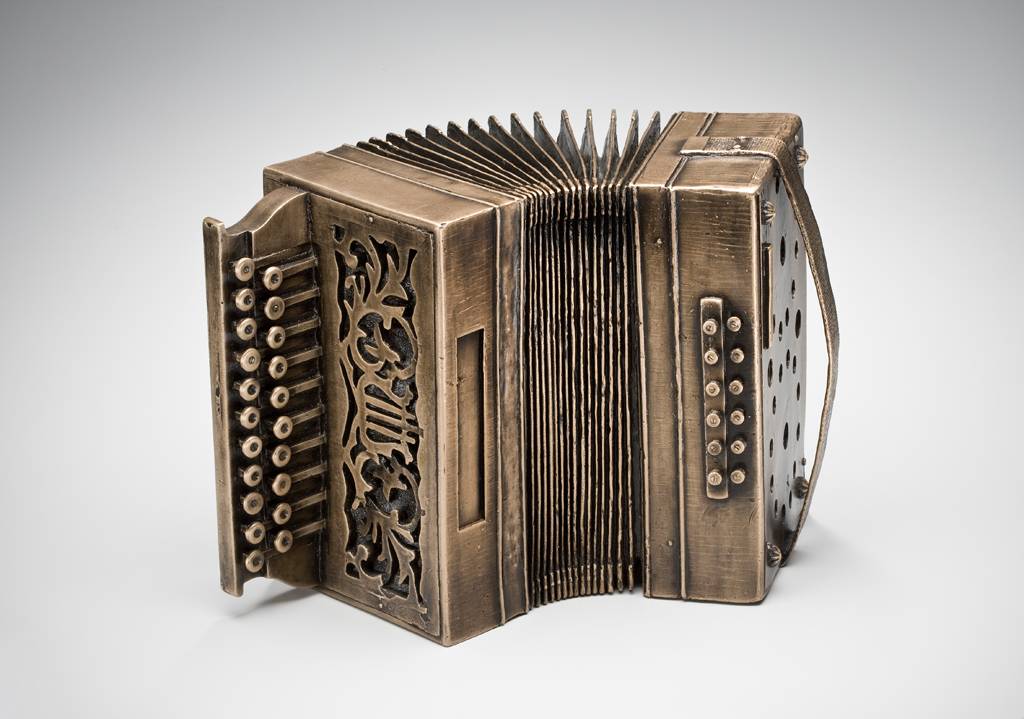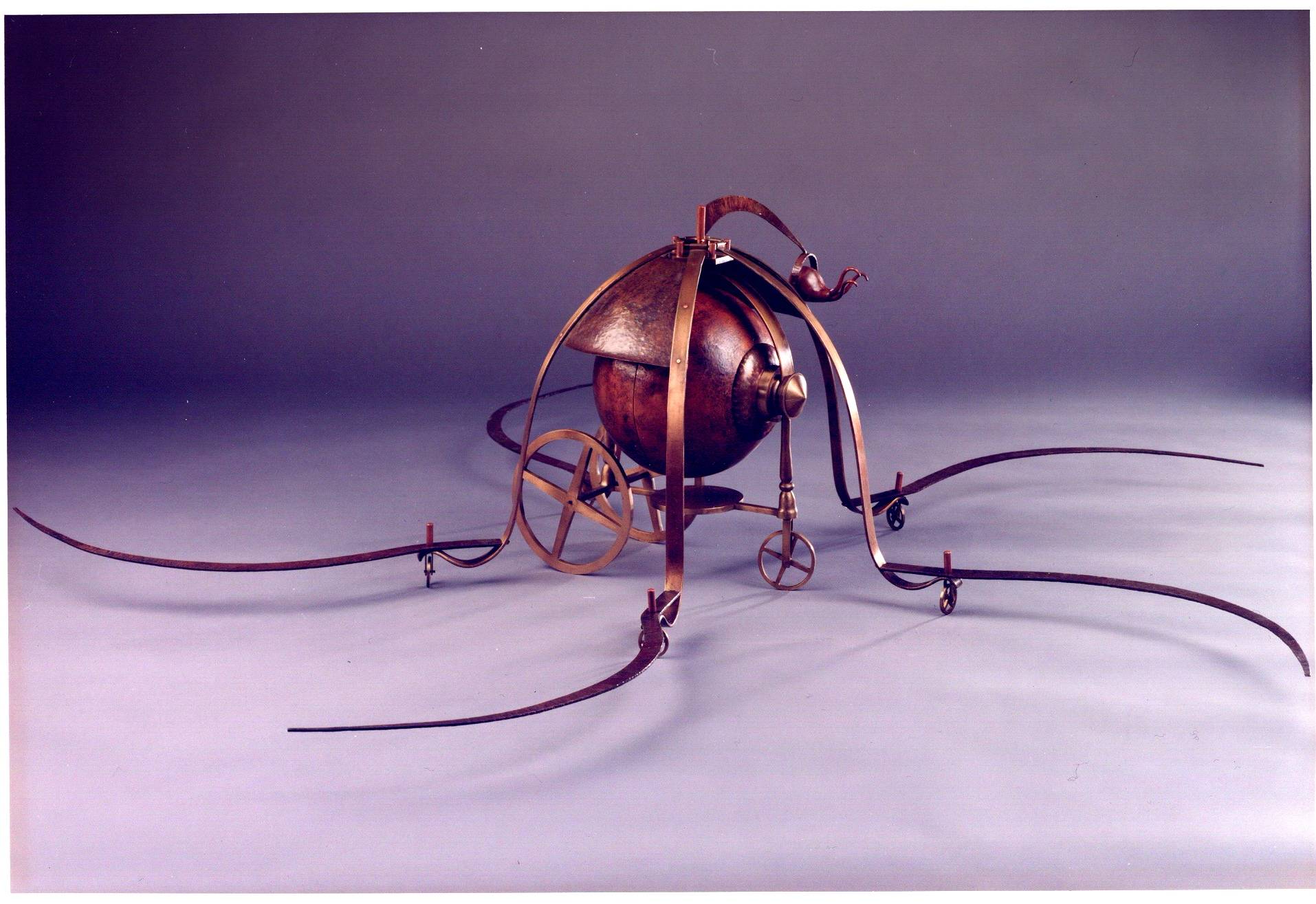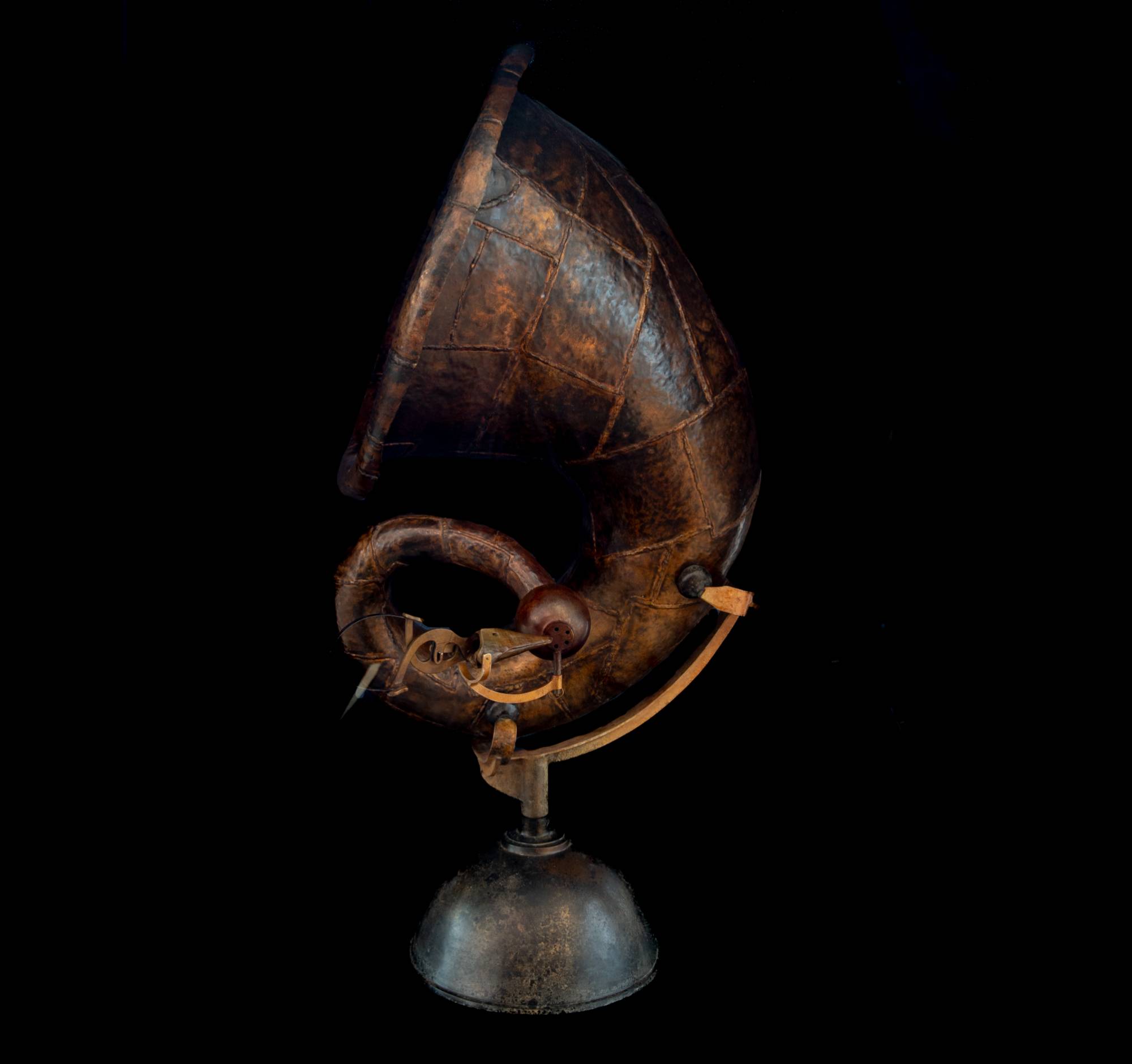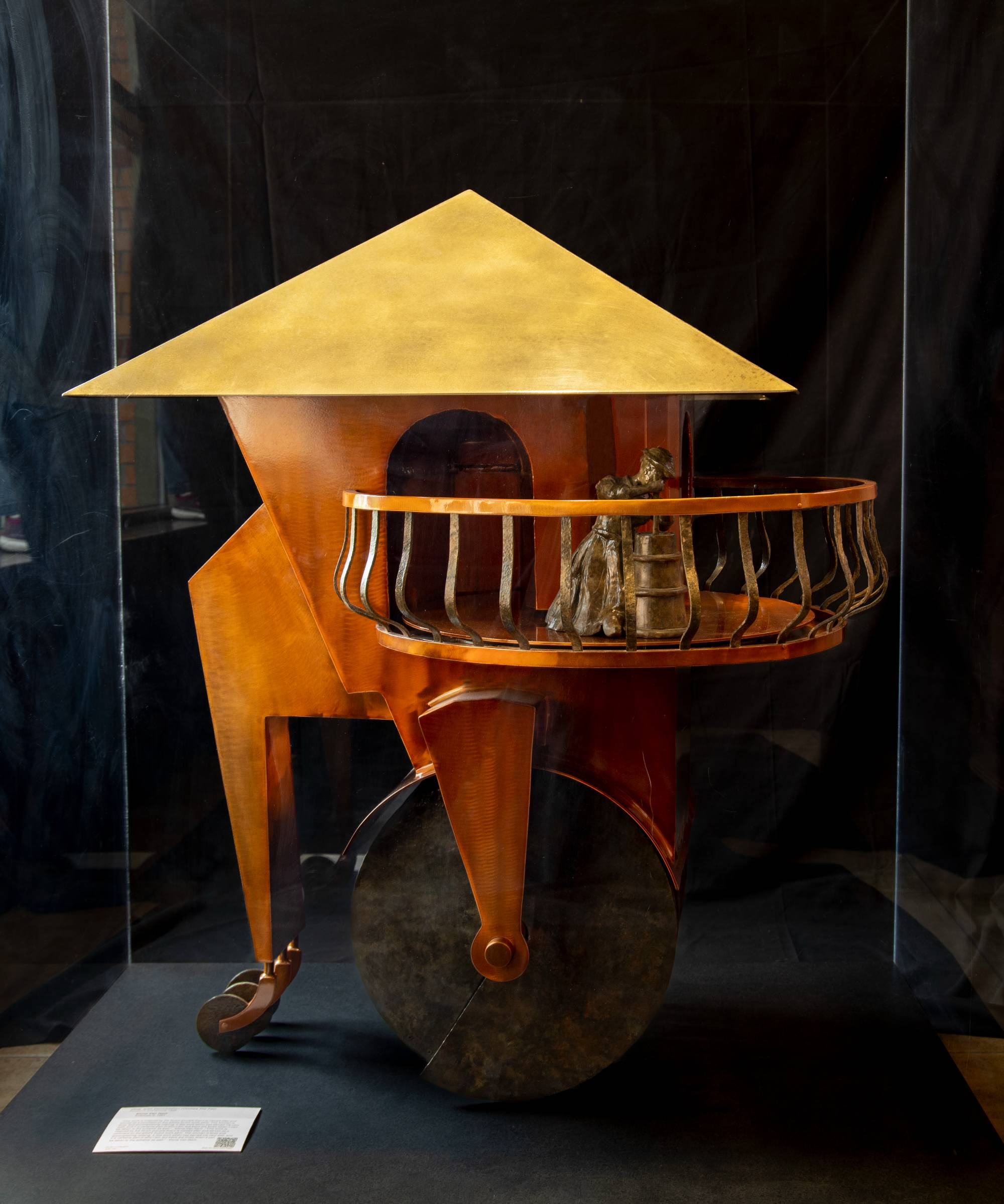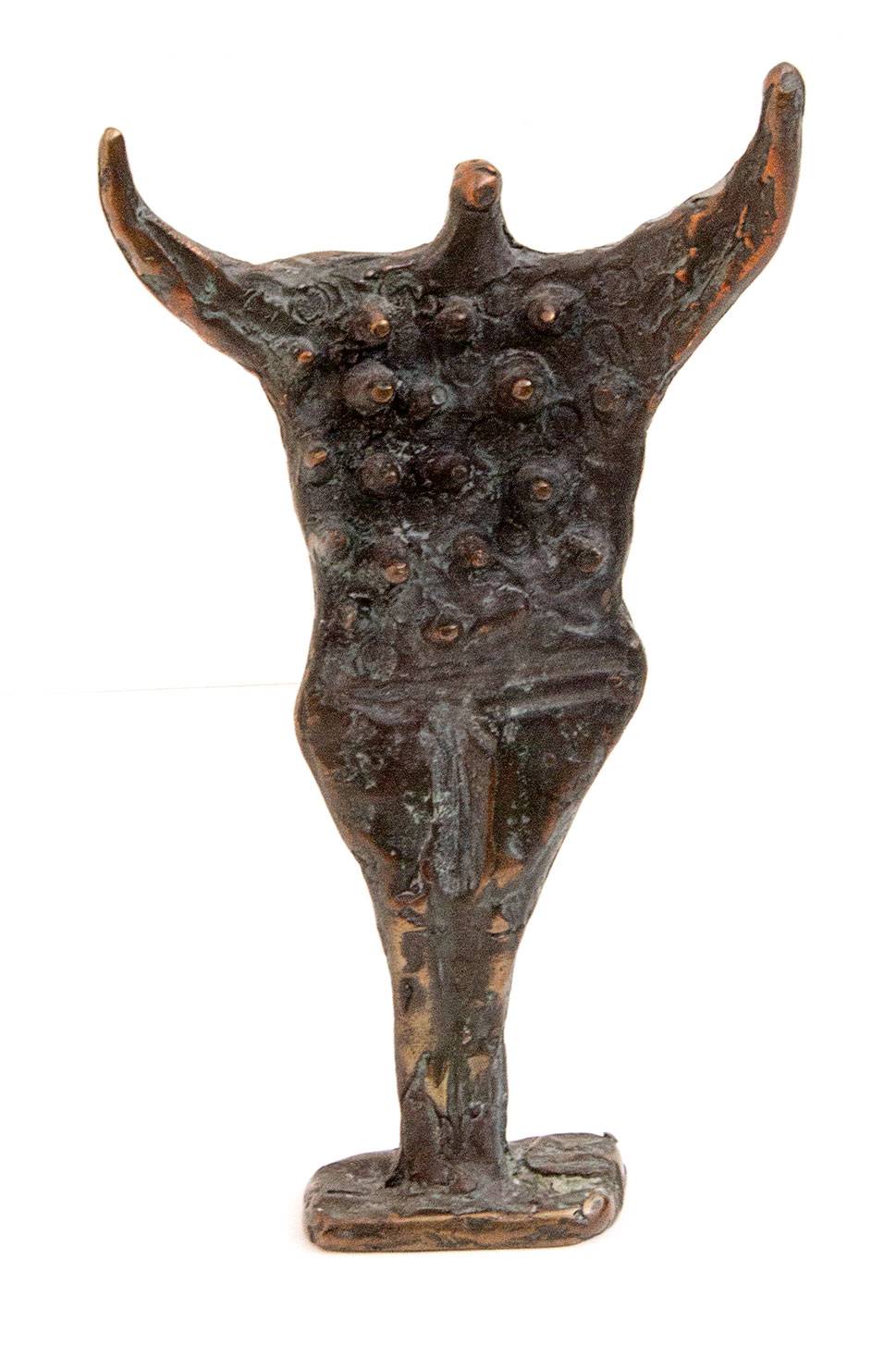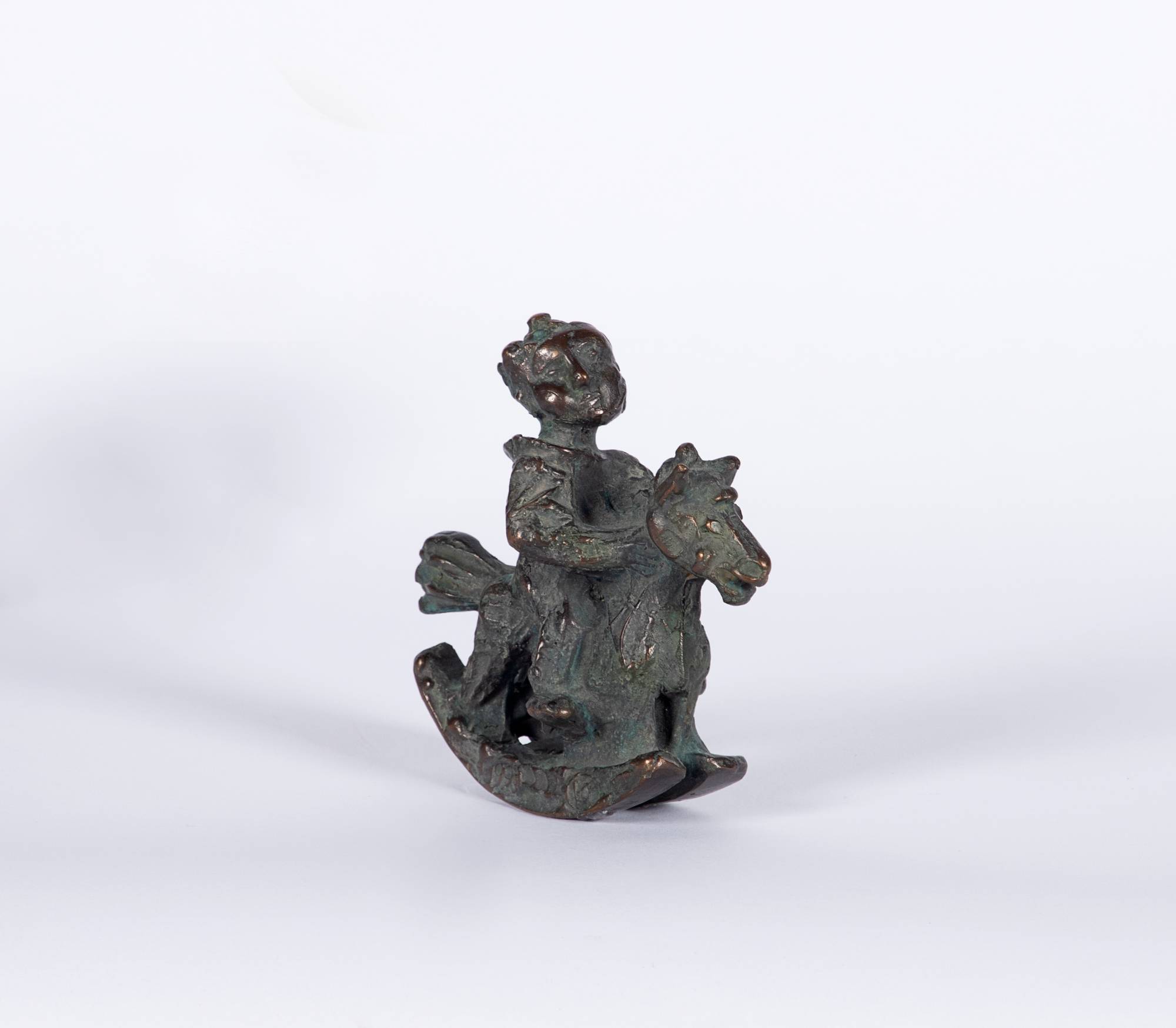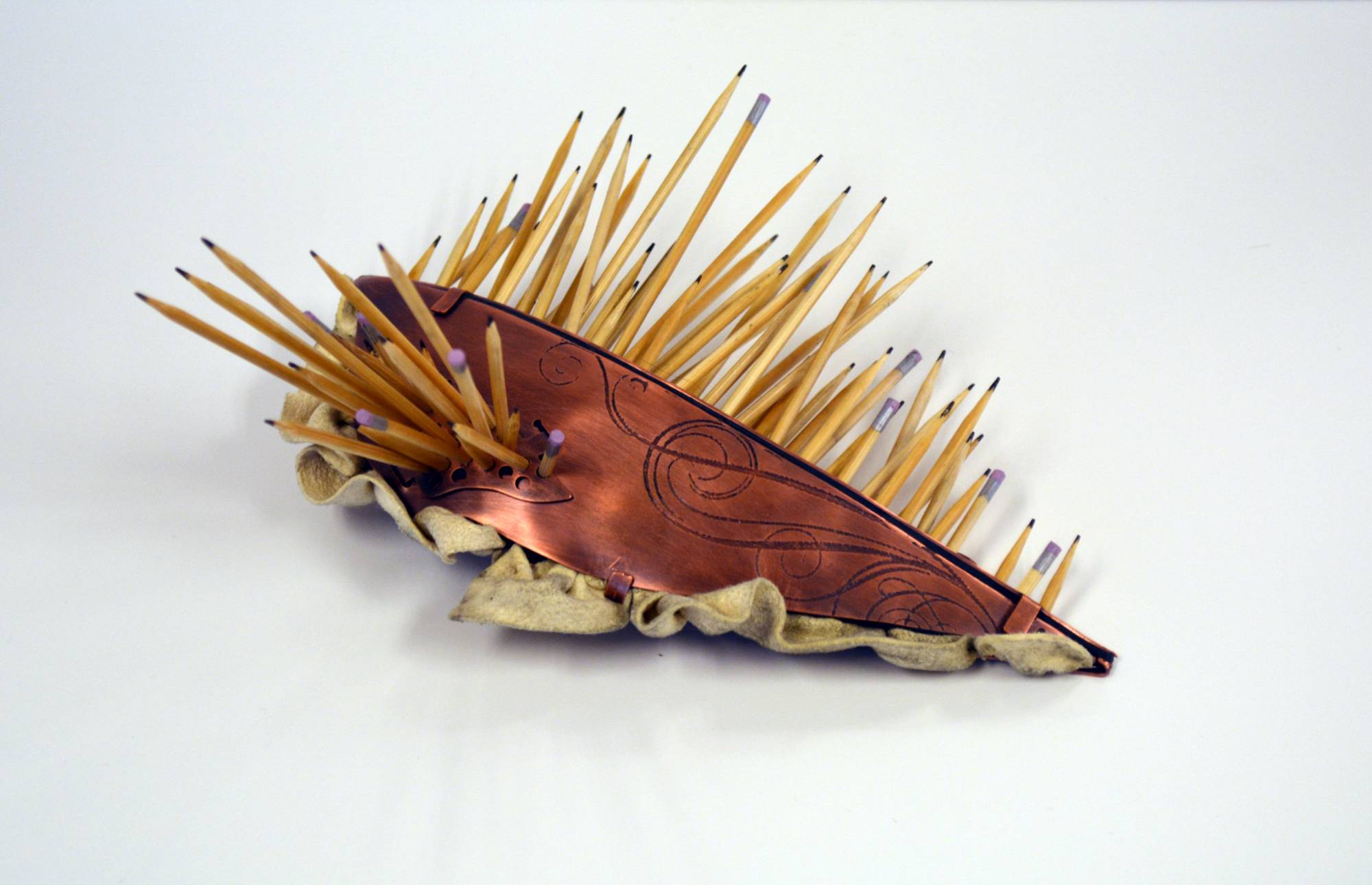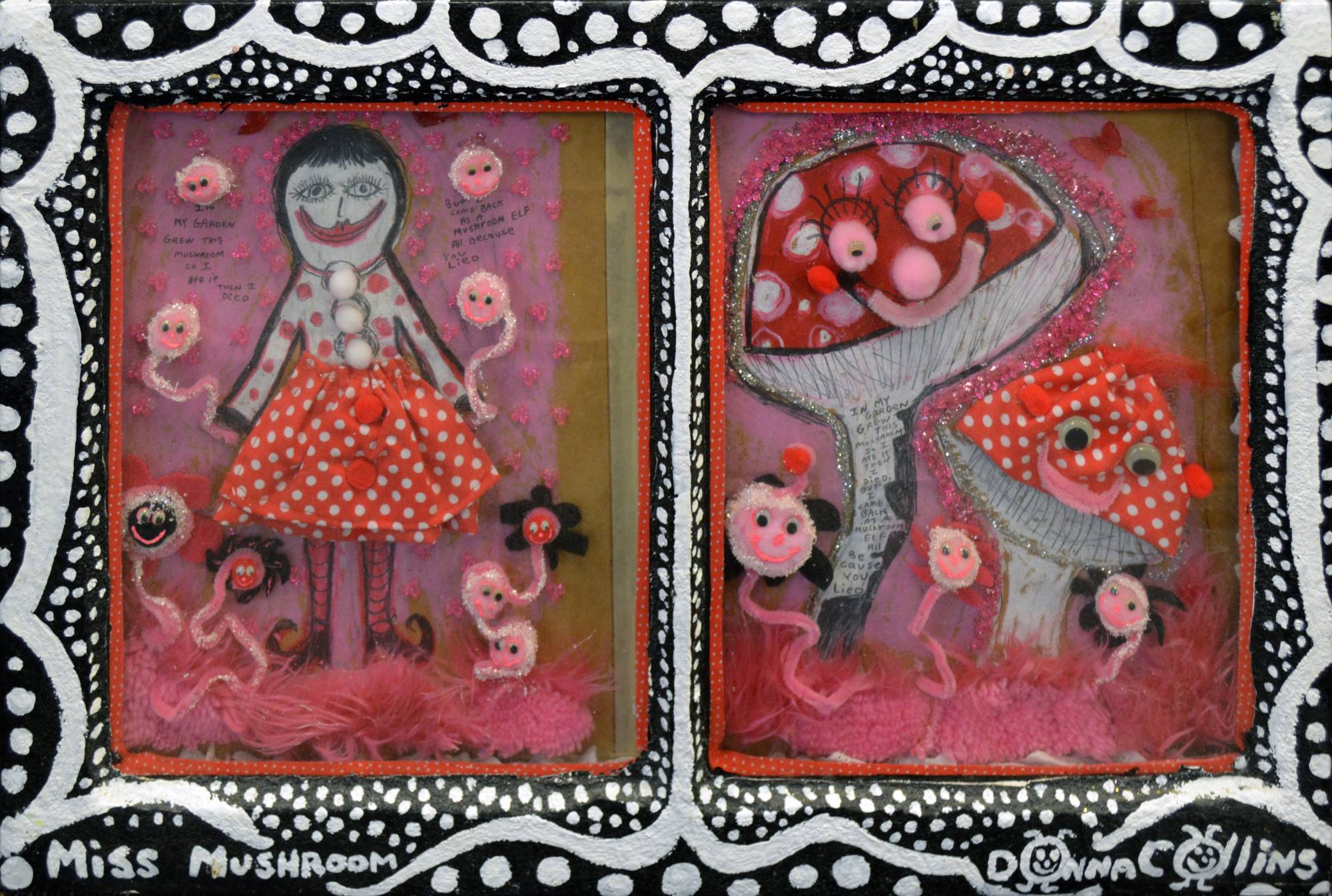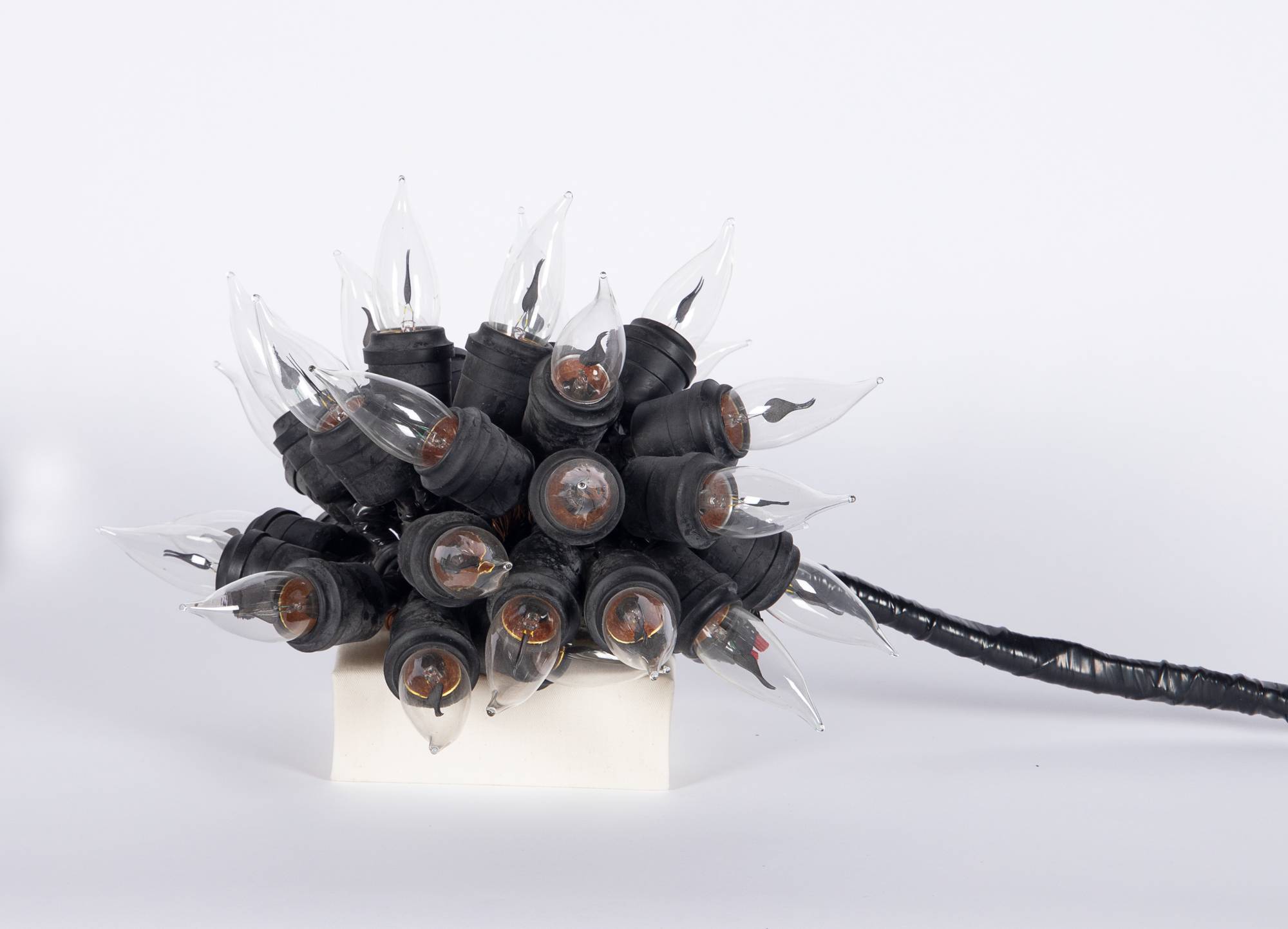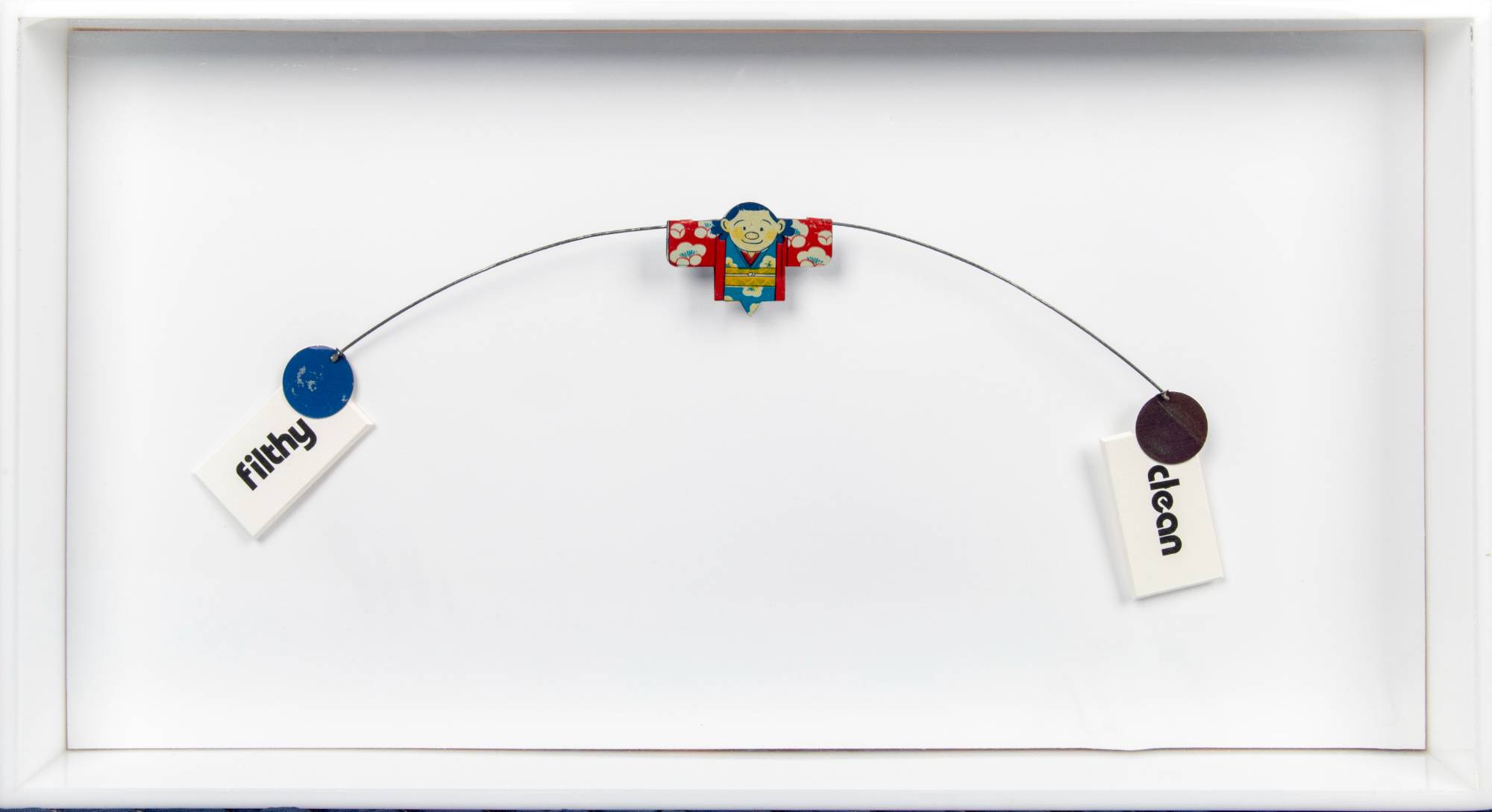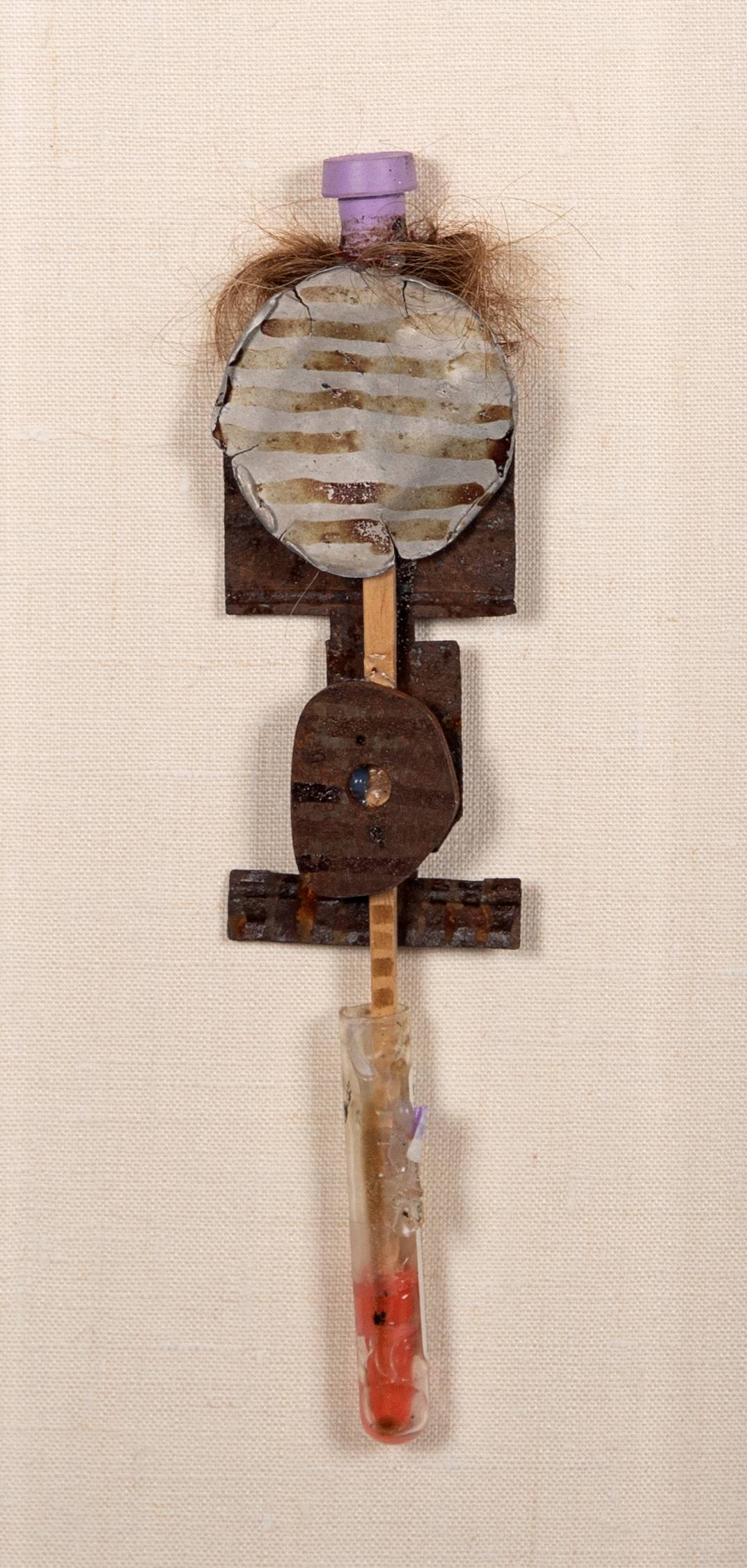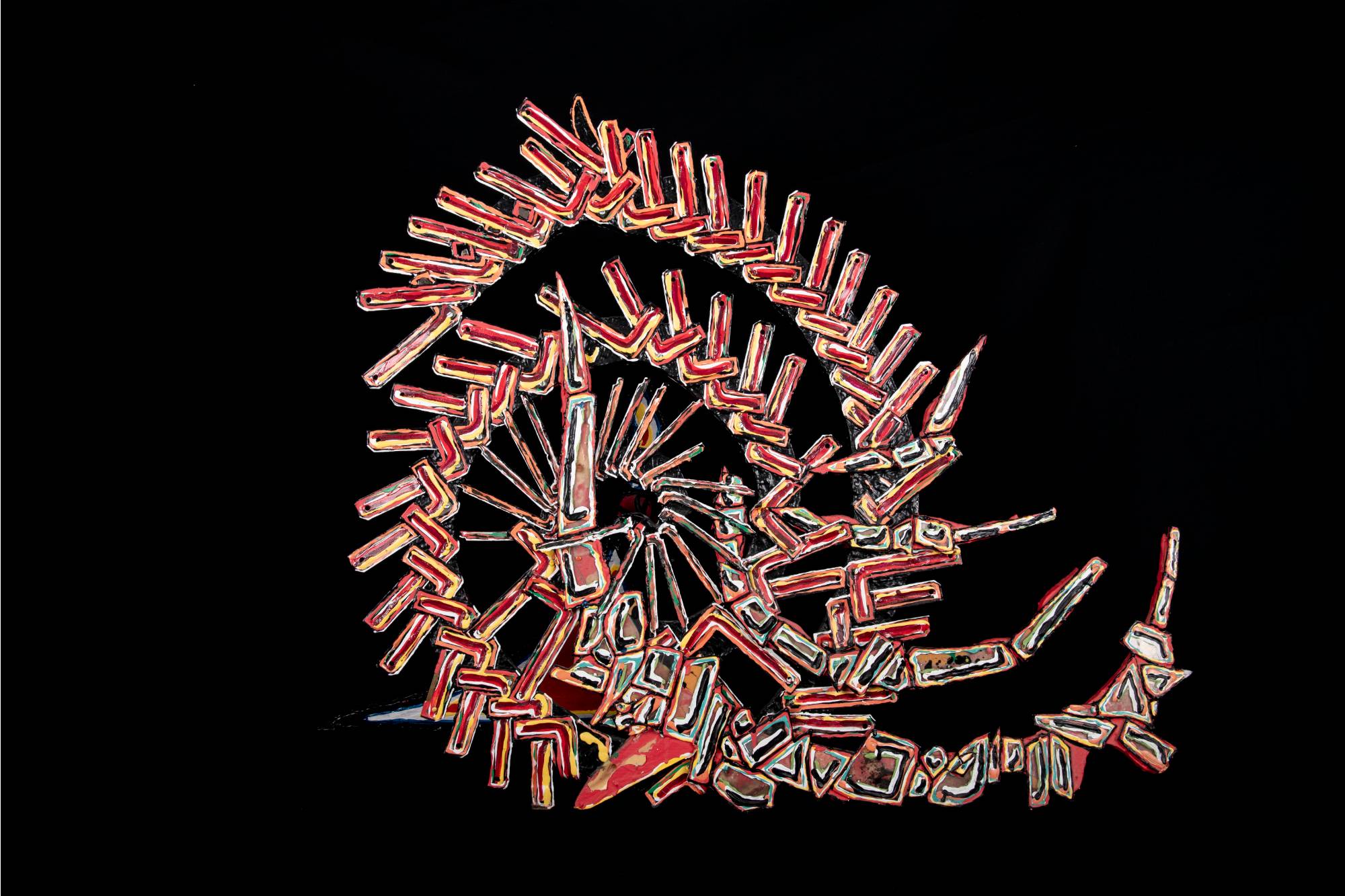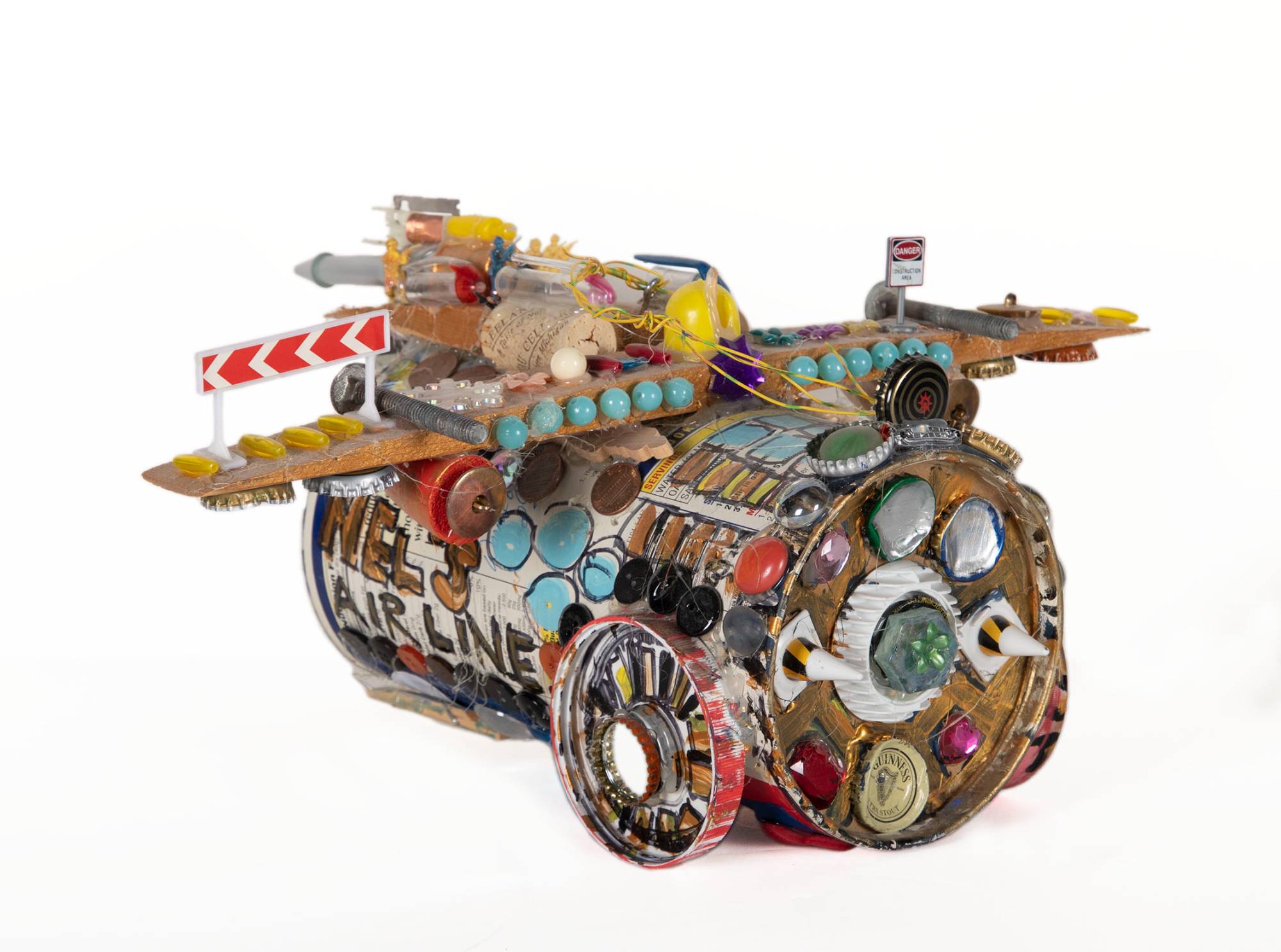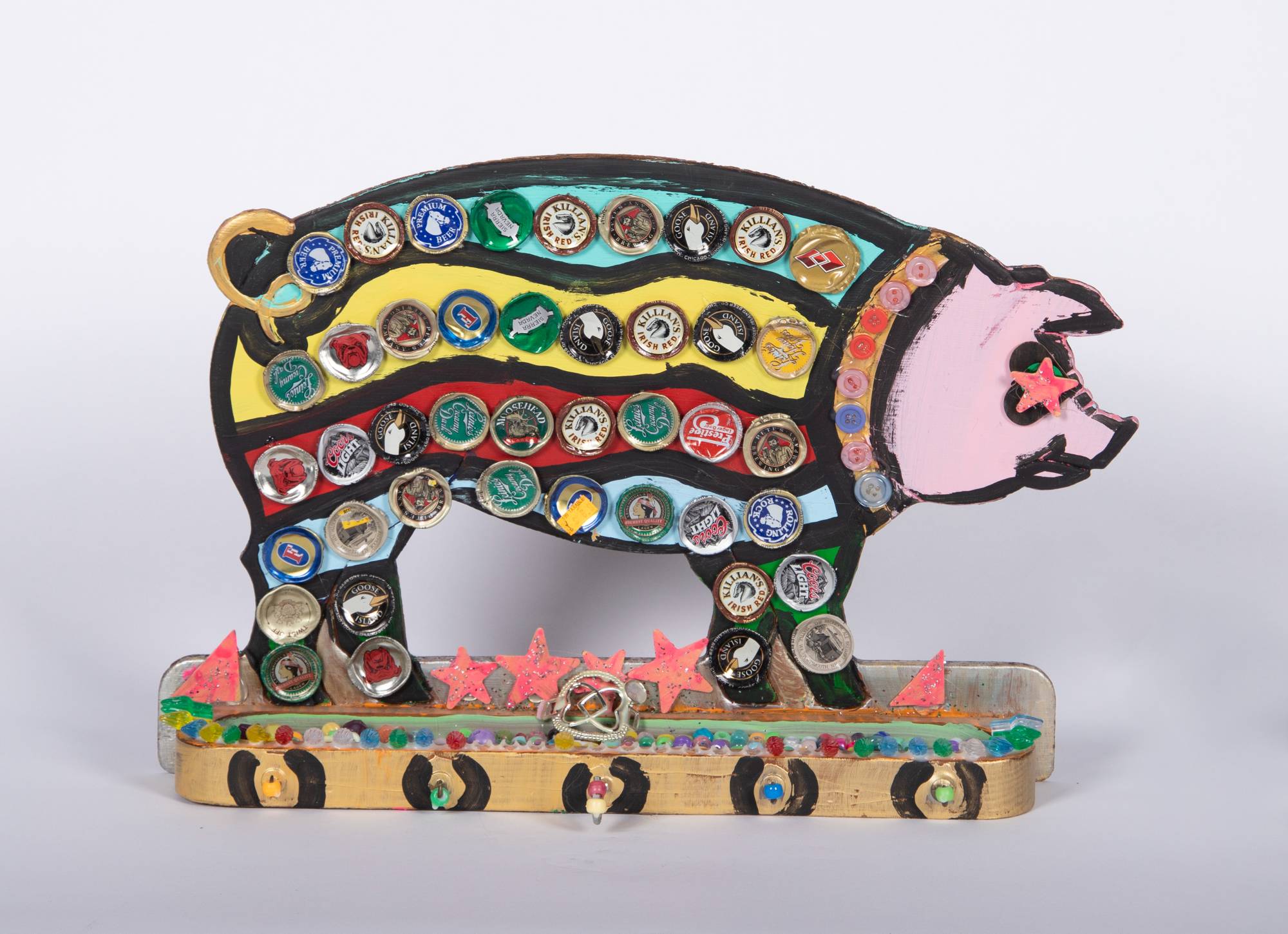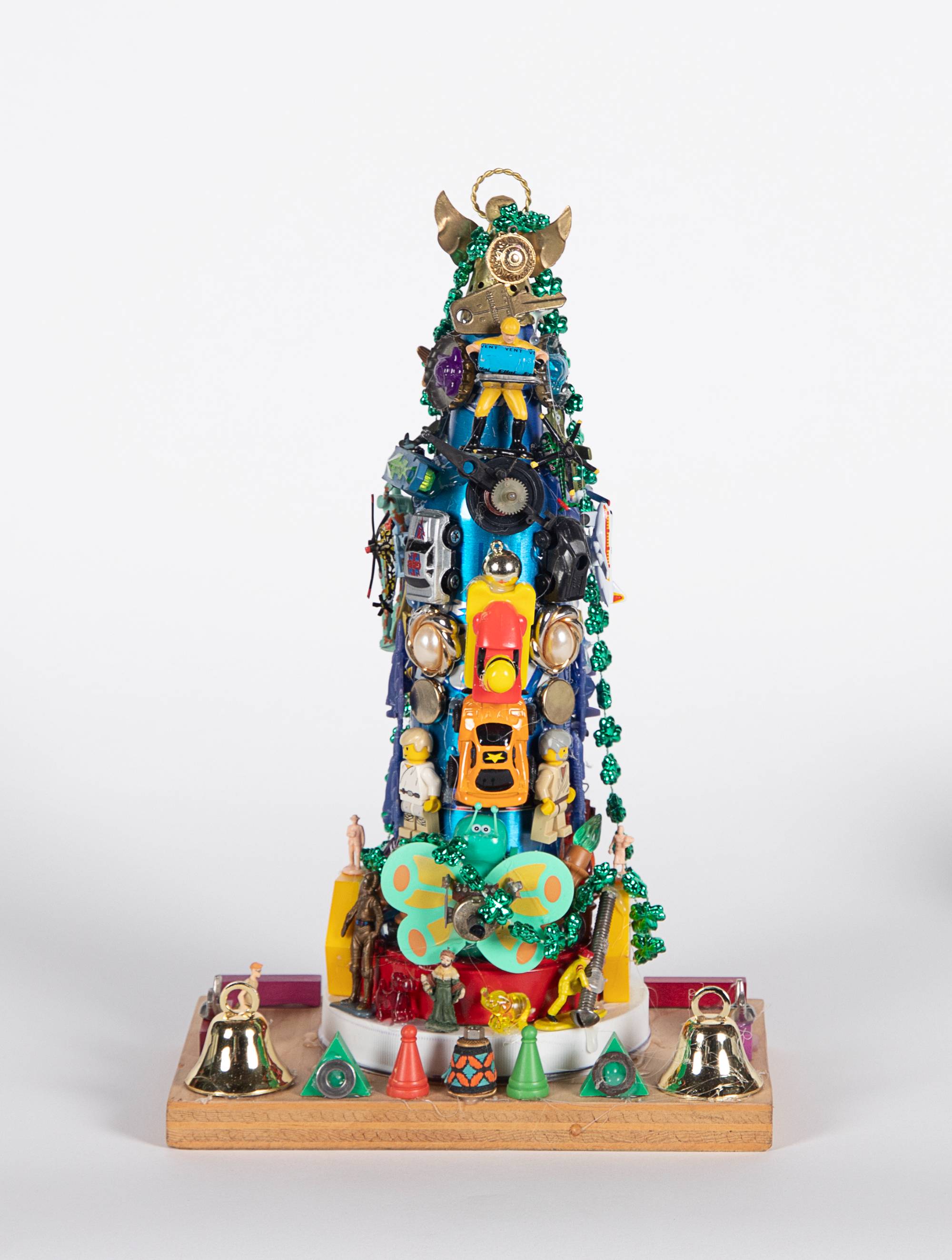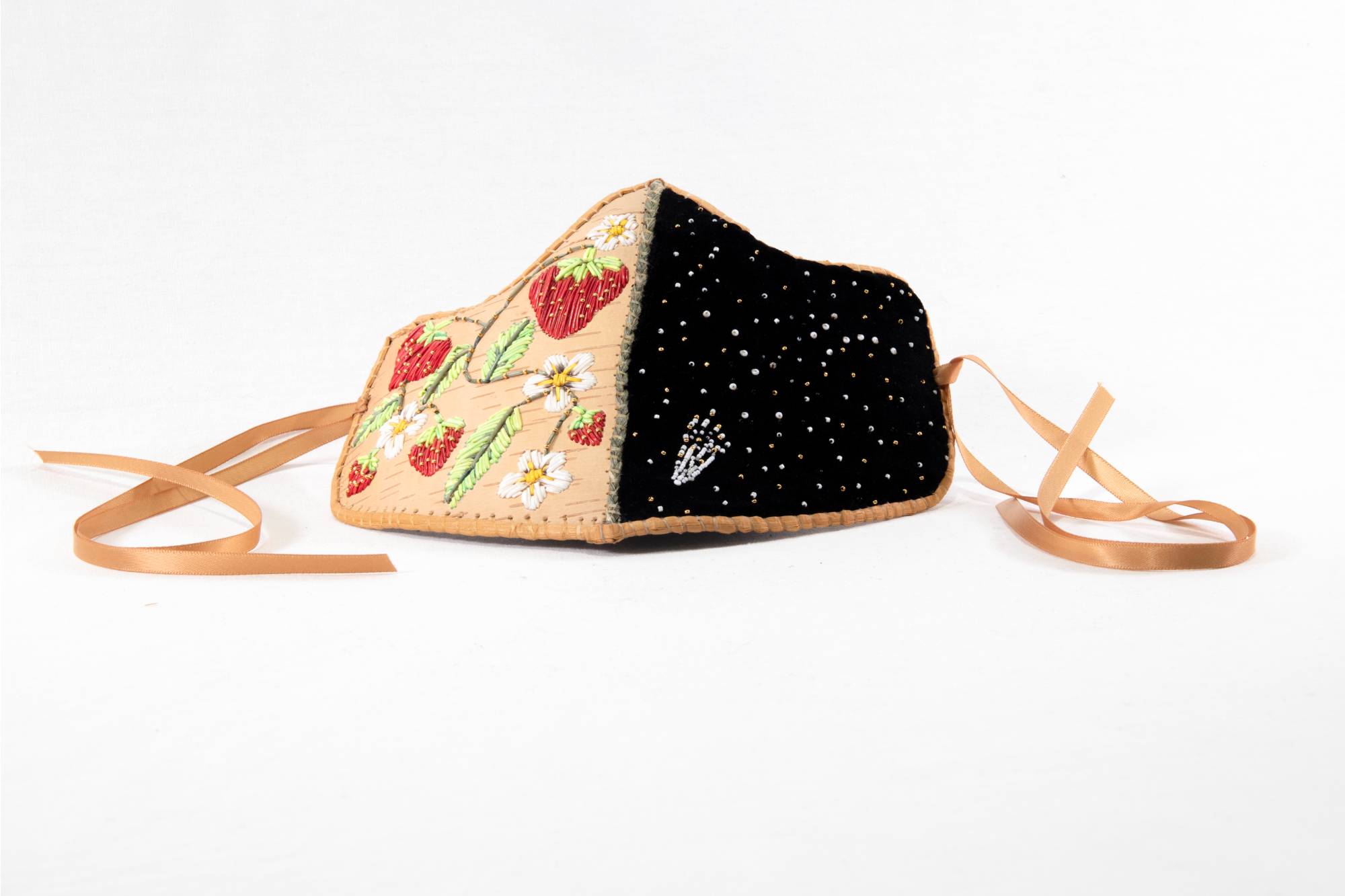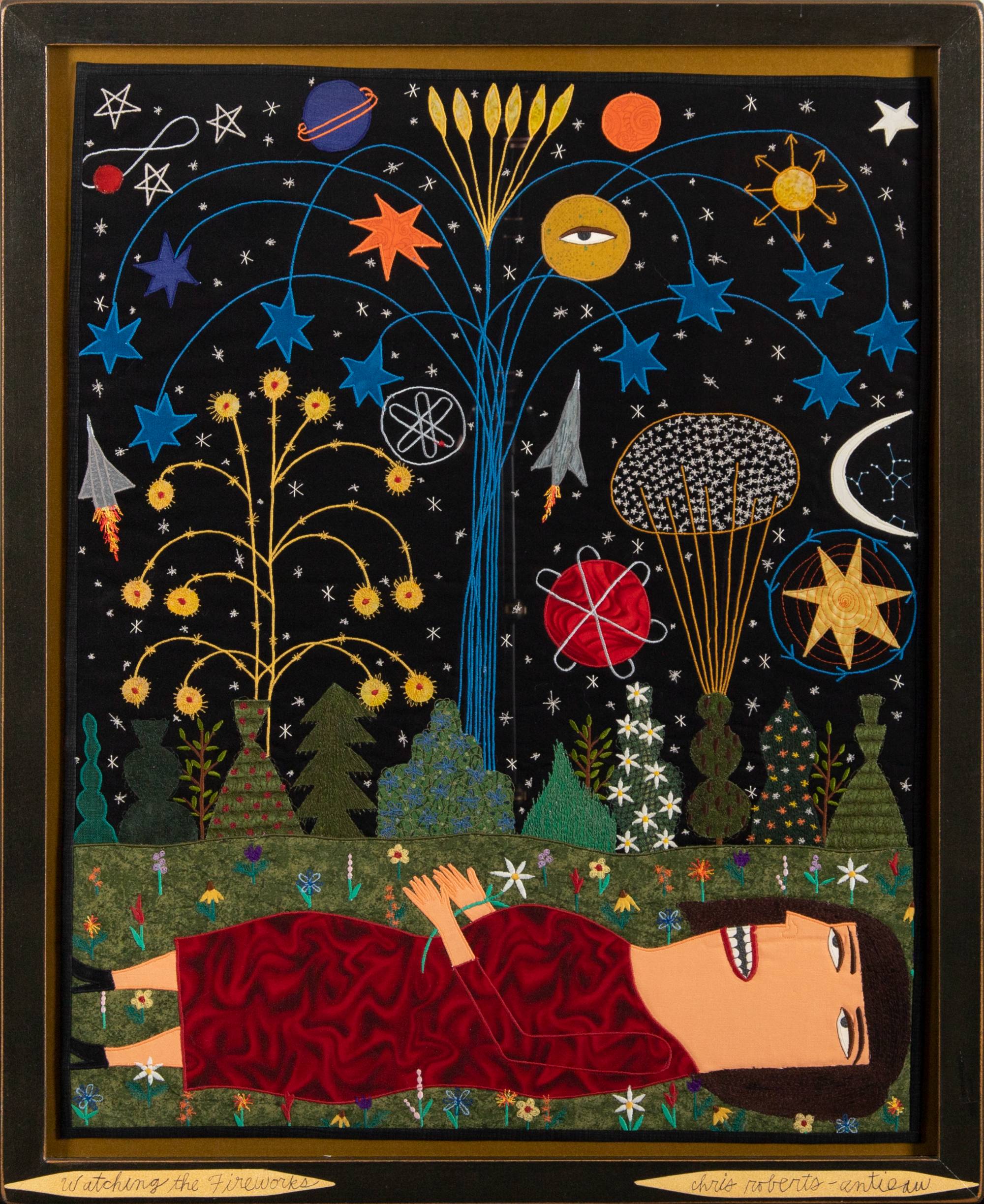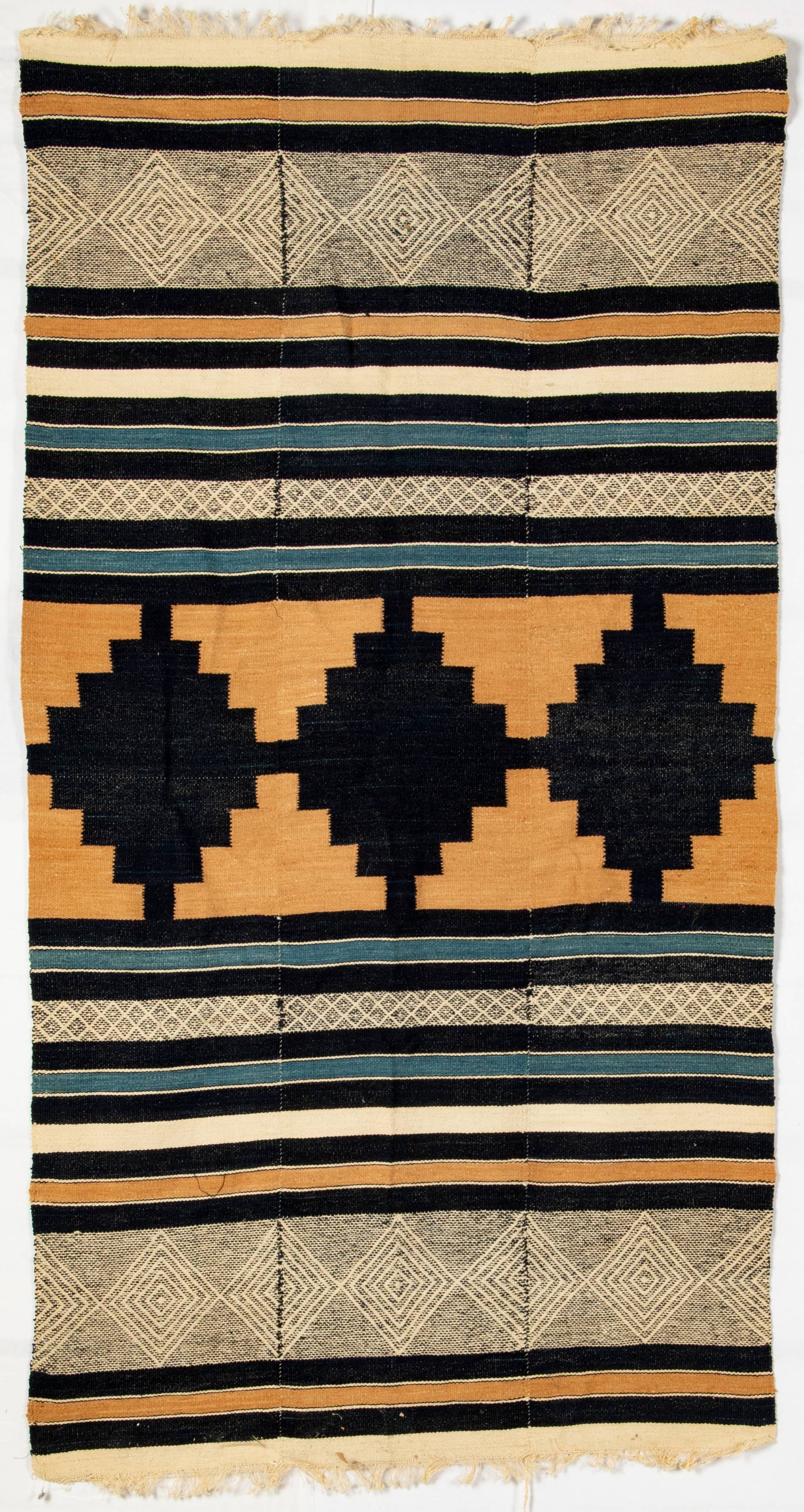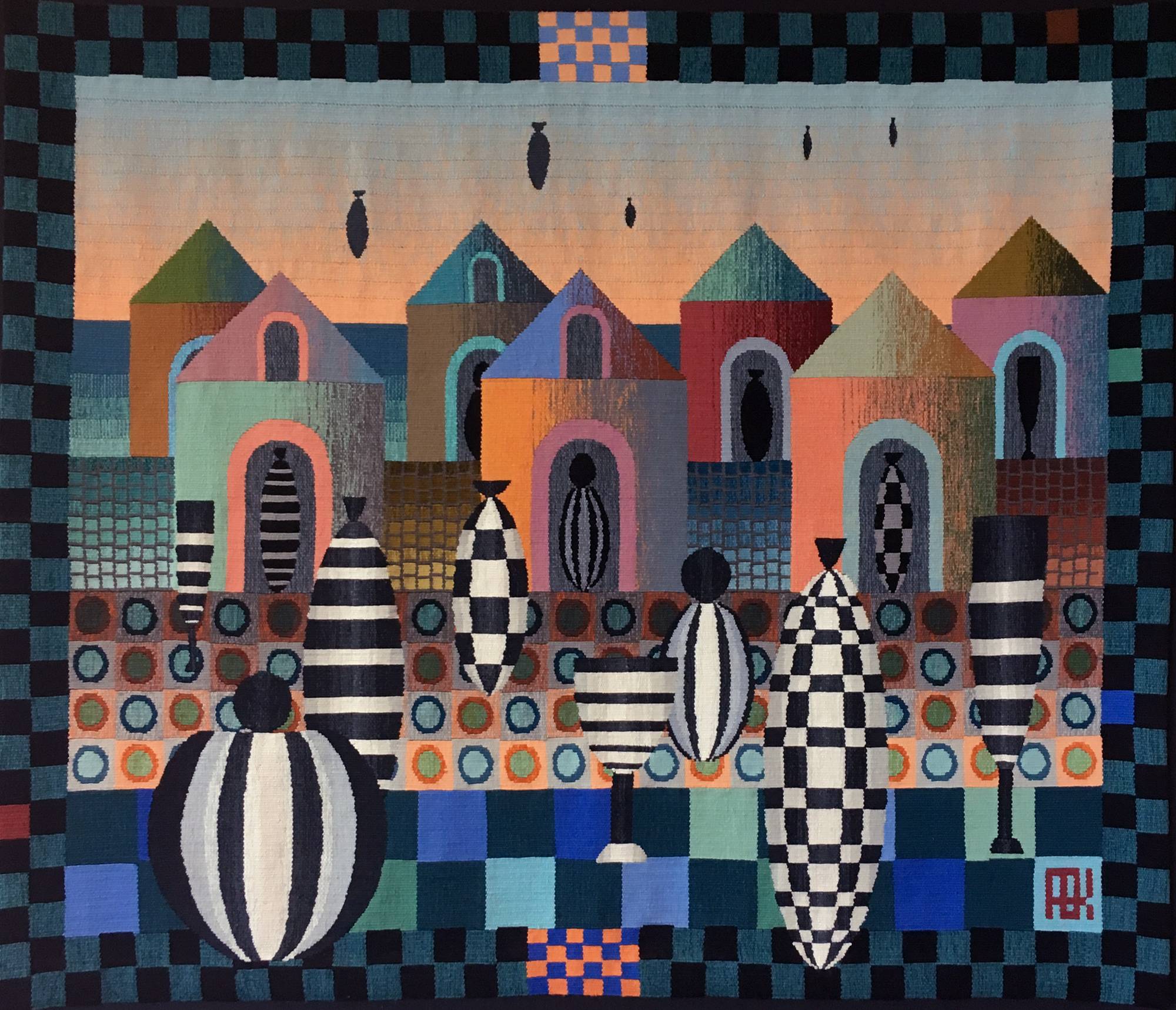Sculpture in the Collection
Sculpture has been used as a form of human expression since prehistoric times. Ancient peoples created human and animal figures carved from stone, wood, or bone for spiritual or religious purposes. The tradition of carved sculptures was especially popular in the Mediterranean. As civilizations grew, monumental-scale sculptures became popular and sculptures became more realistic, often memorializing rulers or functioning as part of religious life.
With the advancement of science and technology, the materials and techniques available to sculptors evolved. Artistic trends swayed by socio-economic movements influenced the themes and images portrayed in 3-dimensional forms over the centuries. Today, sculptures come in a wide variety of materials including wax, stone, fabric, glass, wood, plastic, clay, and found materials. These materials may be carved, molded, cast, wrought, welded, sewn, assembled, thrown on a potter’s wheel, or otherwise shaped and combined to create 3-dimensional sculptures that exemplify diverse concepts.
Ceramics
Ceramics is one of the most ancient industries going back thousands of years with the oldest known ceramic artifact created during the late Paleolithic period. The artifact is a small statue of a woman, named the Venus of Dolní Věstonice, found near the remains of a horseshoe-shaped kiln in the modern-day Czech Republic. In contrast, the first high-fired glazed ceramics were produced during the Shang Dynasty (1700-1027 BC) in China.
Pottery and ceramics are both general terms used to describe objects, functional or sculptural, that were formed with clay, hardened by firing, and decorated or glazed. There are three main types of ceramics: earthenware, stoneware, and porcelain, differentiated by the temperature at which the clay is fired and the resulting strength, water resistance, and durability of the final product. Each type of ceramic can also be coated in different forms of glaze, the glossy coating that can give the surface a variety of colors and textures. Today, there are also several ways to fire ceramics, such as electric kilns, gas kilns, soda firing, raku firing, and wood-burning kilns that create drastically different surfaces.
Hoon Lee, In Contemporary Art, Does 'Regression Of Subject,' Discoursed Especially After Postmodernism, Have Any Correlation With 'The Craftsman' (R. Sennett, 2008) As Subject, porcelain, stoneware, decals, luster, annealed wire, rubber band & mixed-media, 2018. 2019.24.1
Robert Patricio, Acoma Vessel, Polychrome Ceramic, ca 2008. 2009.31.1
Susanne Stephenson, Rock Wave II, Earthenware, 1998. 1999.152.1
Judy Geerts
Raku is a method of firing ceramic pottery taken from a 16th-century Japanese process in which the ceramic piece is removed from a hot kiln and placed into combustible materials. The smoke and flames create unique colors and patterns through carbon off-gas. For local Michigan artist, Judy Geerts, who specializes in copper-flash Raku, the process of a Raku firing is the perfect balance of science and art. Geerts enjoys finding the exact balance needed to create beautiful colors on her pottery.
Wansoo Kim
Wansso Kim was born and raised in South Korea where he received his Bachelor of Fine Arts in ceramics from Seoul National University of Science and Technology. Kim also spent a semester abroad at GVSU. Working with clay has a personal significance for him, connecting him to his nationality and Korea’s historical roots in the production of ceramics. His work makes connections between Korea’s past and today’s modern society.
Stone
Stone carvings are created through a variety of techniques where pieces of rough natural stone are shaped by the controlled removal of selected sections of the stone. Prehistoric stone sculptures were usually human, or animal forms created using a hammer and chisel. Stone is one of the most durable materials that can be carved and manipulated, which has historically made it a popular artistic addition to architecture and the exterior of buildings.
Common stones used in carved sculptures include soapstone, alabaster, limestone, sandstone, marble, granite, and onyx. Artists usually select their stone type for its hardness, the types of tools required, and the end color and texture of the carved stone. While a hammer and chisel are still common tools in contemporary stone sculpting, power tools and lasers can help modern artists create unique forms and textures.
Kathleen Houston-Stokes, New Bone, Limestone, 2008. 2011.89.1
Artist Unknown, Shona Sculpture, Zimbabwe, Carved stone, n.d., 2022.12.11
Artist Unknown, Nandi, Carved stone. 2008.061.1
Jason Quigno
Local Anishinaabe artist Jason Quigno’s sculptures all start out the same way, as a block of natural soapstone, alabaster, limestone, marble, basalt, or granite. From there he sculpts with the movement of the stone, creating an apparent flow from something rigid. By polishing some areas and exposing the stone’s raw texture in other areas, he creates both balanced abstract forms and harmonious naturalistic forms.
Glass
While glass art owes much of its sustained creation to the studio glass movement in the early 20th century, the history of glass art can be traced back as far as the Roman Empire in the first century BCE when Syrian craftsmen first invented the techniques used to create molded and blown glass vessels. These early examples included goblets and pitchers, often decorated with painted or etched designs. By the Renaissance, glass was being produced throughout Europe. Stained glass depicting Christian and Jewish symbols were particularly popular. During this time Venice, Italy, emerged as a prominent glass manufacturing center, though later Italian laws required all furnaces used in glass making be moved to Murano, a city still known for its glass production today.
There are several ways to produce glass art, including blowing, kiln-casting, fusing, slumping, hot-sculpting, and cold-working. These techniques are often put under three main categories, hot, warm, and cold, based on the temperatures used to shape the glass. Once shaped, glass can also be engraved, polished, cut, and etched to further the level of decoration.
Herb Babcock, Tablet, cast glass, circa 1995. 2003.158.1
Harry Boyer, Untitled, glass, 2000. 2020.32.1
Cristian Onesto, Jellyfish Aquarium, Murano Artistic Glass, circa 2019. 2019.61.1
Dale Chihuly
Dale Chihuly is known for stretching the limits of glass with his big ideas and challenging color palettes, yet Chihuly did not begin his artistic practice working in glass, but rather with weaving. During an art class at the University of Washington, Chihuly incorporated glass shards into one of his woven tapestries, an experiment which led him to blow his first glass bubble. In 1971 Chihuly co-founded the Pilchuck Glass School in Washington. After injuries sustained in a bodysurfing accident, Chihuly was no longer able to hold a glassblowing pipe, but hired others to do the labor of executing his ideas, continuing the tradition of glass blowing within the Pilchuck Glass school.
Metals
Metal sculptures have been around for centuries. Many early examples were intended as functional objects. Materials used for metal sculptures include iron, tin, bronze, copper, silver, gold, and steel. Each type of metal has its own set of properties that require a different process in order to shape and mold them. One of the most common techniques in metal sculpting, especially for tin and iron, is to melt the metals into their liquid form and pour the metal into a mold. Tools, like hammers, anvils, welding equipment, and grinders can also assist an artist in forming the sculpture or creating different colors and textures.
Gary Kulak, Transformational Link, painted steel, 1990. 1998.007.1
Artist Unknown, Animal Mask, recycled tin, n.d. 2017.42.2
Renee Zettle-Sterling, Actuality #8, bronze, silver, copper, 2002. 2002.411.1
Cyril Lixenberg
While trained in classic techniques, Cyril Lixenberg opted to explore modern materials like Corten steel and silk screen prints. Having lived and worked in Amsterdam for most of his life, Cyril Lixenberg discovered Michigan by chance when he was invited to do a one-man show at the University of Michigan. Following that exhibition, Lixenberg traveled to Michigan on several occasions and created a strong bond with the local arts community and college students. He has a number of large-scale public works of art in West Michigan including two on GVSU campuses.
Cyril Lixenberg, Out of Symmetry, stainless steel, ca. 2002. 2002.579.1b
Cyril Lixenberg, Amaranth, painted steel, 2002. 2002.00418.1
Cyril Lixenberg, Magela - S, corten steel, 2010.57.1
James Clover
James Clover, born in Iowa in 1938, is an internationally known sculptor and educator. Inspired by the structures of jazz music, Clover's sculptures are usually made of bronze and steel to form shapes that build upon each other to reach toward the sky.
James Clover, Heaven and Earth, painted steel, 1991. 1998.006.1
James Clover, Study (Grass), painted steel, 1988. 1998.097.1
James Clover, Untitled, painted steel, 1991. 1998.098.1
Bronze
Bronze is an alloy metal consisting primarily of copper and tin. Other metals such as aluminum, manganese, or zinc as well as non-metals like phosphorus or silicon can be added to bronze to change its strength. Bronze was created and became popular during what is now referred to as the Bronze Age in Europe and India, dating to around 3,300 BCE and later in China around 2,000 BCE. The discovery of bronze enabled people to create metal objects, like tools, weapons, and armor, that were harder and more durable than stone or copper. The first cast bronze sculpture, using melted alloys and a mold, is thought to be that of the Assyrian King Sennacherib around 700 BCE. Bronze sculptures were regarded as the highest form of sculpture in Ancient Greece. Techniques using bronze have not significantly changed since these ancient times.
Elona Van Gent
Michigan artist Elona Van Gent's sculptures draw inspiration from natural history and surrealism. Van Gent's works are known for their mechanical-like inventions that never seem to have a distinct function. Today she works heavily with computer programs to create even more complex and incredible forms.
Elona Van Gent, Reap What You Sow, bronze and copper, 2004. 2004.358.1a
Elona Van Gent, Sounding, bronze and aluminum, 1998. 2003.116.1
Elona Van Gent, Only with Commotion (Comes the Fat), aluminum and bronze, 1998. 2000.020.1
Dmitry Kaminker
As a young man in the Soviet Army, Dimitry Kaminker worked as an assistant to artists creating public sculptures for the Russian government. Wanting to express his own artistic style, Kaminker created artwork in the sub-basement of the government studio. He gathered recycled and discarded materials to create sculptures that the authorities would never have permitted him to exhibit. Playing with the sometimes-contradictory combination of myth and reality, Kaminker’s artwork can have a humorous side but is meant for thoughtful reflection on history and modernity.
Dmitry Kaminker, Danu: Thousand Breasts Goddess, cast bronze, n.d. 2004.386.1
Dmitry Kaminker, Little Horseman’s Monument, cast bronze, 1999. 2004.394.1
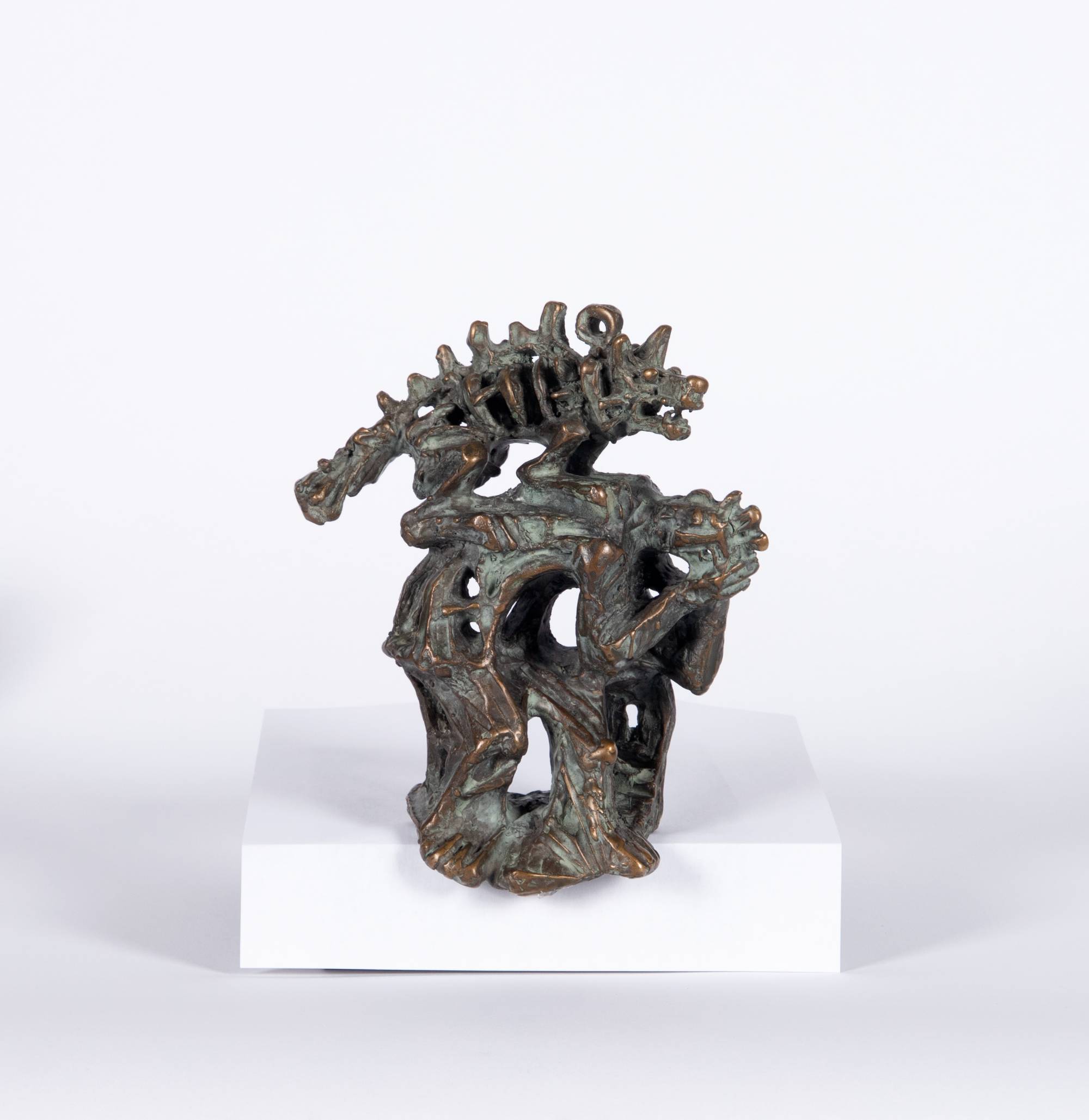
Dmitry Kaminker, Underdog, cast bronze, n.d. 2004.0395.1
Mixed Media
Mixed media sculpture is defined as any sculpture that is comprised of two or more materials, allowing the artist to combine different materials, colors, textures and scales within one work of art. A large category of work within mixed media sculpture is found object art. These sculptures are created from undisguised, but often modified, items or materials that are not normally considered materials from which art is made, like bottle caps, toys, food containers, and old signs.
Betsy Vollmar, Tactile Brooch, Mixed Media, n.d. 2016.112.1
Gerome Kamrowski, Retroactive, Mixed Media, 1982. 2001.216.1
Donna Collins, Miss Mushroom, Mixed Media, n.d. 2017.1.56
Jin Soo Kim
Jin Soo Kim, born in South Korea, came to the United States at the age of 24 to study art. She studied at Western Illinois University, Macomb, while supporting herself as a nurse. Kim prefers to work in installation art, most of which is largely autobiographical. The autobiographical nature of her work is said to be a result of her dual cultural identity, comprised of both her "sensitivities to the disparities between the impoverished South Korea of her youth, and the culture of abundance in America.”
Jeff Colby
Jeff Colby used mixed media and collage to create art on the theme of his own personal and emotional struggles. In his work, he united themes of hope with horror, beauty with tragedy, and a curiosity for life. After his diagnosis of HIV in the 1990s, Colby's work tended to be more emotional and physical because of the turmoil brought about by his illness. Colby died shortly after his major exposition at the Chicago Cultural Center in 1996.
Jeff Colby, The Balance Series: Filthy/Clean, mixed media, 1995. 2002.32.1c
Jeff Colby, Island Blood Sticks Series #8, mixed media and found objects, 1991. 2002.27.1
Jeff Colby, Roto, mixed media, 1985. 2002.81.1
Rick Schaafsma
Rick Schaafsma is a retired police officer who served on the streets of Grand Rapids from the late 60s through the mid-90s. Using the pen name "ARCH" taken from his high-arched basketball shot, Schaafsma draws a range of fanciful figures including his "CopToons" with the hope that children will look at police officers in a positive light beginning at an early age.
Rick Schaafsma, Nel’s Airline, mixed media, n.d. 2016.15.45
Rick Schaafsma, Bottle Cap Pin in a Poke, mixed media, n.d. 2016.15.47
Rick Schaafsma, Tree of Toys, mixed media, n.d. 2016.15.42
Textiles
Textiles have always played a vital role in human civilization. Historians and anthropologists have traced textile art as far back as 500,000 years ago with items made from plants, fur, and other animal products. Many of these textiles were used as practical objects for survival, like blankets, clothing, and rugs. As civilizations developed, the materials and techniques used to create textiles changed. Animal fur was felted, natural materials were knit, woven or sewn into new, more complex and intricate artistic patterns that each culture used to express themselves.
Over the years, textile art has had to compete with other art forms, as critics tend to treat it as a lower form of art than other mediums. Textile production often fell under the category of women’s manual work, rather than being valued for its creativity and diversity of materials. Today, textile art is becoming more mainstream, artists are using traditional techniques like knitting, sewing, quilting, weaving, and spinning in new and inventive ways. Textile artists are pushing boundaries while reflecting on the historic importance of textiles across all civilizations.
Kelly Church, Breathe in The Beauty of The Day And The Beauty of The Night, Birch Bark, quills, Rit Dye, thread, velvet, and beads, n.d. 2021. 2021.22.1
Chris Roberts-Antieau, Watching the Fireworks, fabric appliqué, 2016. 2016.109.1
Artist Unknown, Kpokpoi from Bo, Sierra Leone, handspun, handwoven, stripwoven and dyed cloth, 1973. 2021.53.4
Ann Baddeley Keister
Ann Baddeley Keister's main resources for inspiration for her textile-based art were travel, museum study, and her design library of photographs of art, architecture, and food. Keister combined several textile art techniques, such as beading, embroidery, quilting, and weaving within her art. Her quilts, tapestries, and fabric-based art have been widely exhibited and published.
Ann Baddeley Keister, Interiors/Milagros, mixed media, 2003. 2003.304.1a
Ann Baddeley Keister, Uninvited Visitors, woven textile, 1995. 2013.6.8
Ann Baddeley Keister, Shadows Passing, wool tapestry, n.d. 2022.6.3
Art on Campus
For more information about the artwork selection and installation process at the DeVos Center for Interprofessional Health or other buildings on campus, please contact our Project Manager, Alison Christensen; [email protected].
University Art Collection
For questions related to any artwork in the University Art Collection, in storage or on view, please contact our Collections Manager, Nicole Webb; [email protected].
Learning
For questions about integrating artwork into curriculum, please contact our UX/Learning Manager, Amanda Rainey; [email protected].


